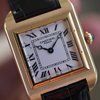
BjoernM21
124

Independent Watchmaking: Why Atelier Visits are so valuable (Romain Gauthier, De Bethune, Kari Voutilainen, Vianney Halter, Philippe Dufour)
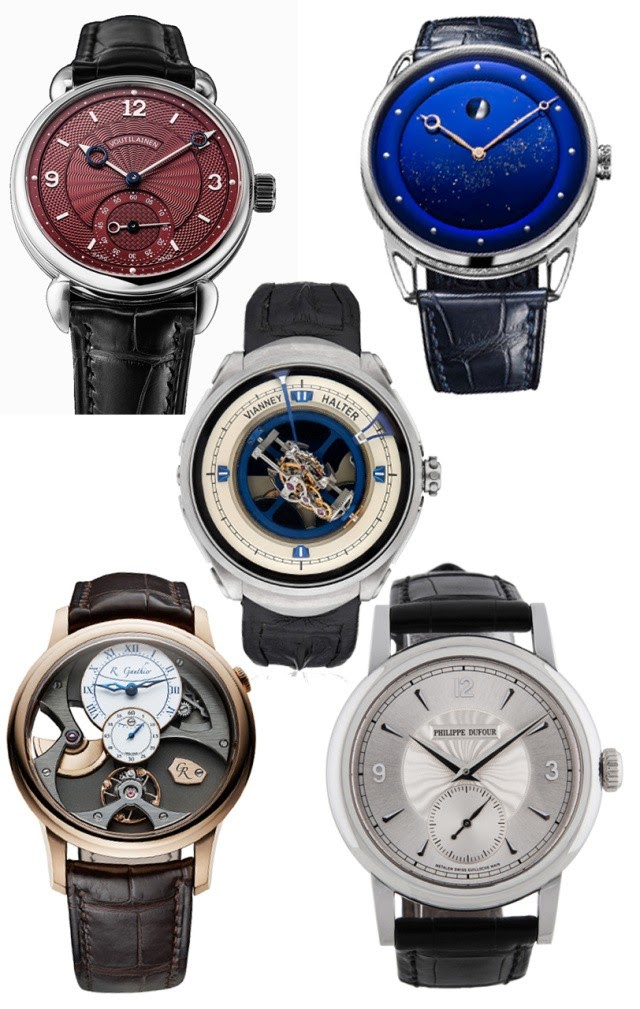
Most independent watchmakers actively invite enthusiasts to visit their manufacturing place. Opportunities not to be missed! Participating in the Independent Tour/GTG superbly organised by Mike H in June 2017, I apprehended one thing: I cannot get the full picture of such special watches as we have seen by reading company brochures or even looking at them in a shop window (including the booth at shows). At least for me, the desirability comes with knowing the ideas implemented in the watches as well as the individuals who have conceived them. Otherwise it is just a nice commodity without a lot of emotional attachment to it.
Listening to these most interesting and enthusiastic explanations by the master watchmakers, I also wondered a bit why the copywriters often cannot pick up what their bosses are living for day and night. Every-one of them has “Passion”. Why not replace such platitudes with a description of the specific ideas and convictions of the master watchmaker that make the watches special or even unique compared to others? Watches I have before not necessarily considered (most often not understanding why they look the way they do and what gems are hidden within them) became highly attractive with the background information we were given by our hosts at the visits.
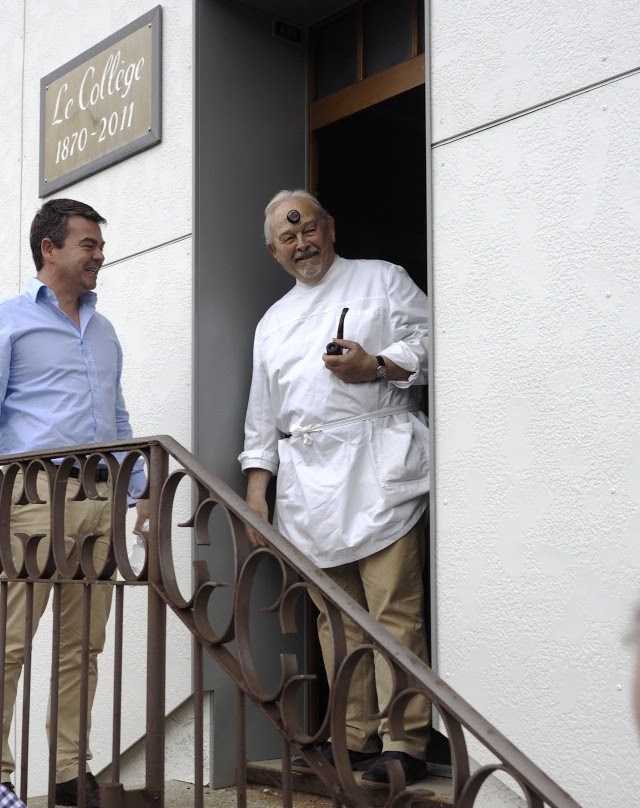
Based on our tour in the Jura mountains of Switzerland, I would like to give some samples of how my eyes were opened standing in these ateliers/manufacturing places:
Romain Gauthier
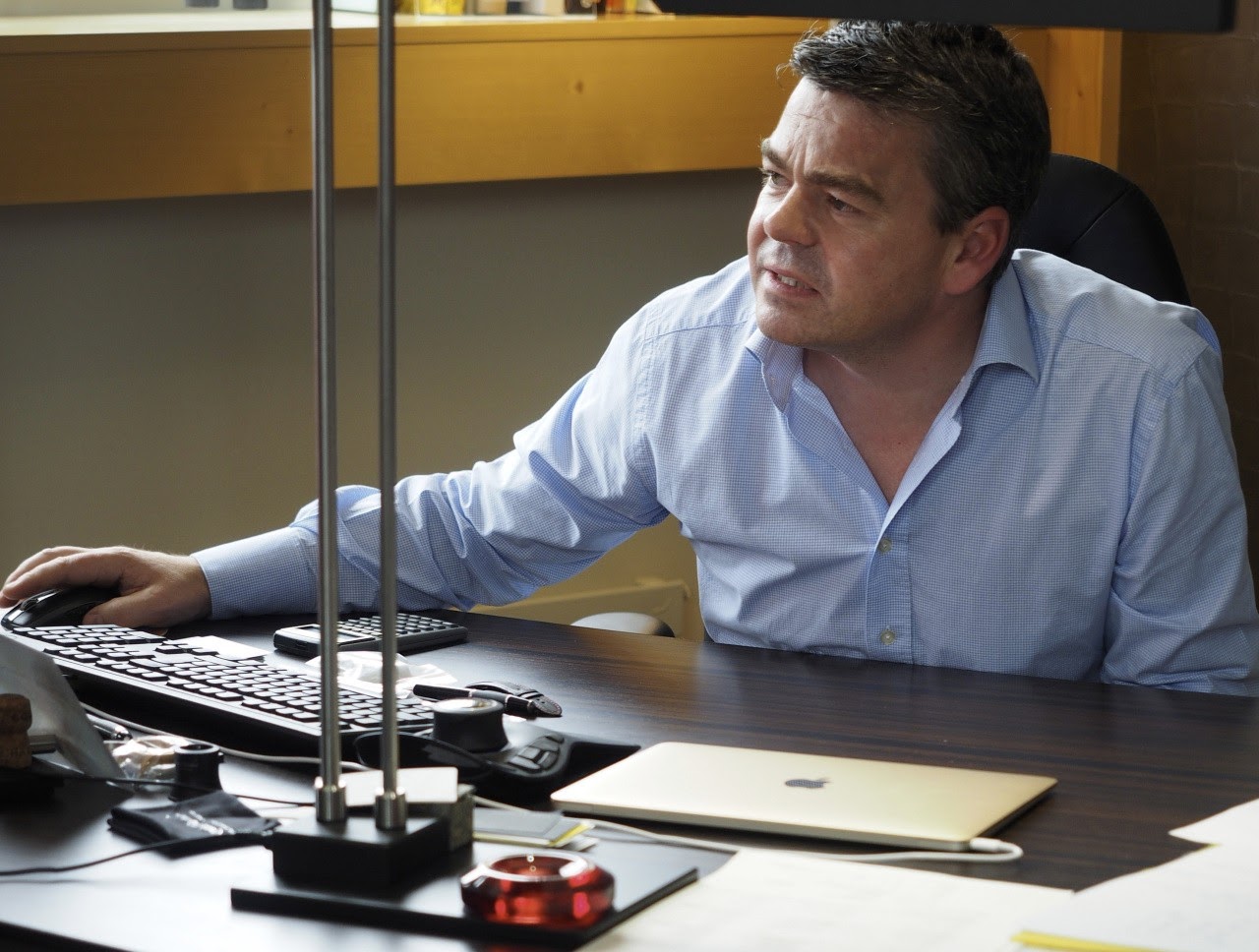
Our tour started in Le Brassus/Vallée de Joux, the historic centre of fine watchmaking. Romain Gauthier has set up his manufactory in a purpose designed building. It became quickly apparent that Romain Gauthier is a driven engineer first, but also loves fine watchmaking. We entered therefore not a quaint atelier, but a climate controlled (at a constant 24°C that tolerances can be precisely calculated) hall equipped with the latest CNC mills and a plethora of controlling devices.
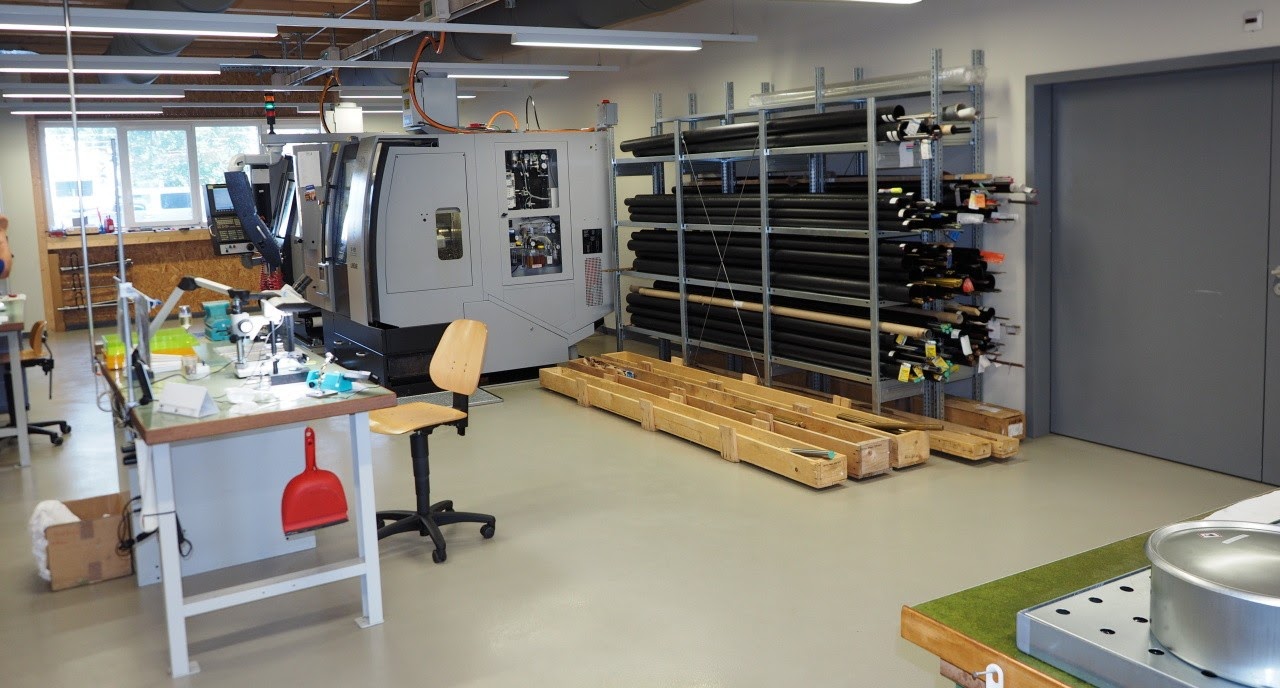
While all traces that could reveal the customers for components were carefully removed before our visit, it was obvious that Romain Gauthier is producing the most difficult parts for a lot of “big names” in the watch industry. One reason for this demand is a guarantee of constant tolerances of +/- 2 microns (diameter of a human hair: 17 – 181 microns) while the industry standard is +/- 20 microns! We have seen highly delicate open cages (where the shape and material and the tension it entails are considered in production by adapting tools and programs) and parallel gears on one shaft with inside bevelling of the parts where you cannot even imagine a tool could reach. Looking at these parts, you definitely realise that watch production with simple hand tools (in the way George Daniels built his watches) is not possible when today’s complications at the top layer of watchmaking have to be accommodated.
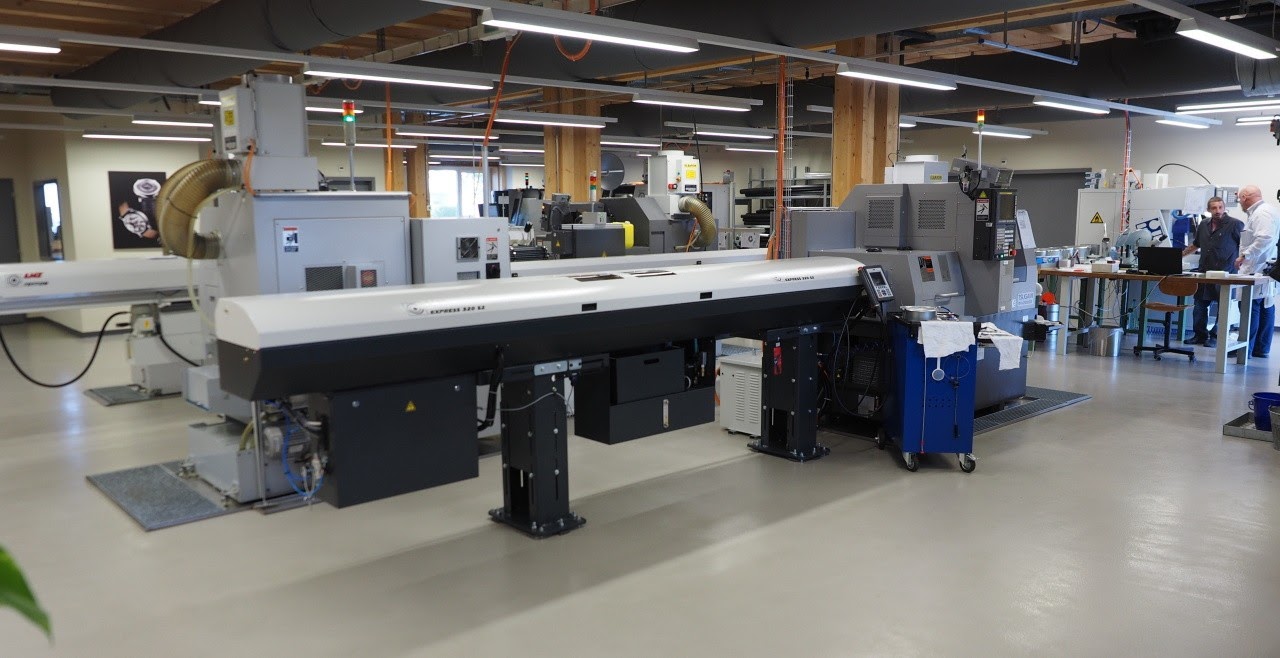
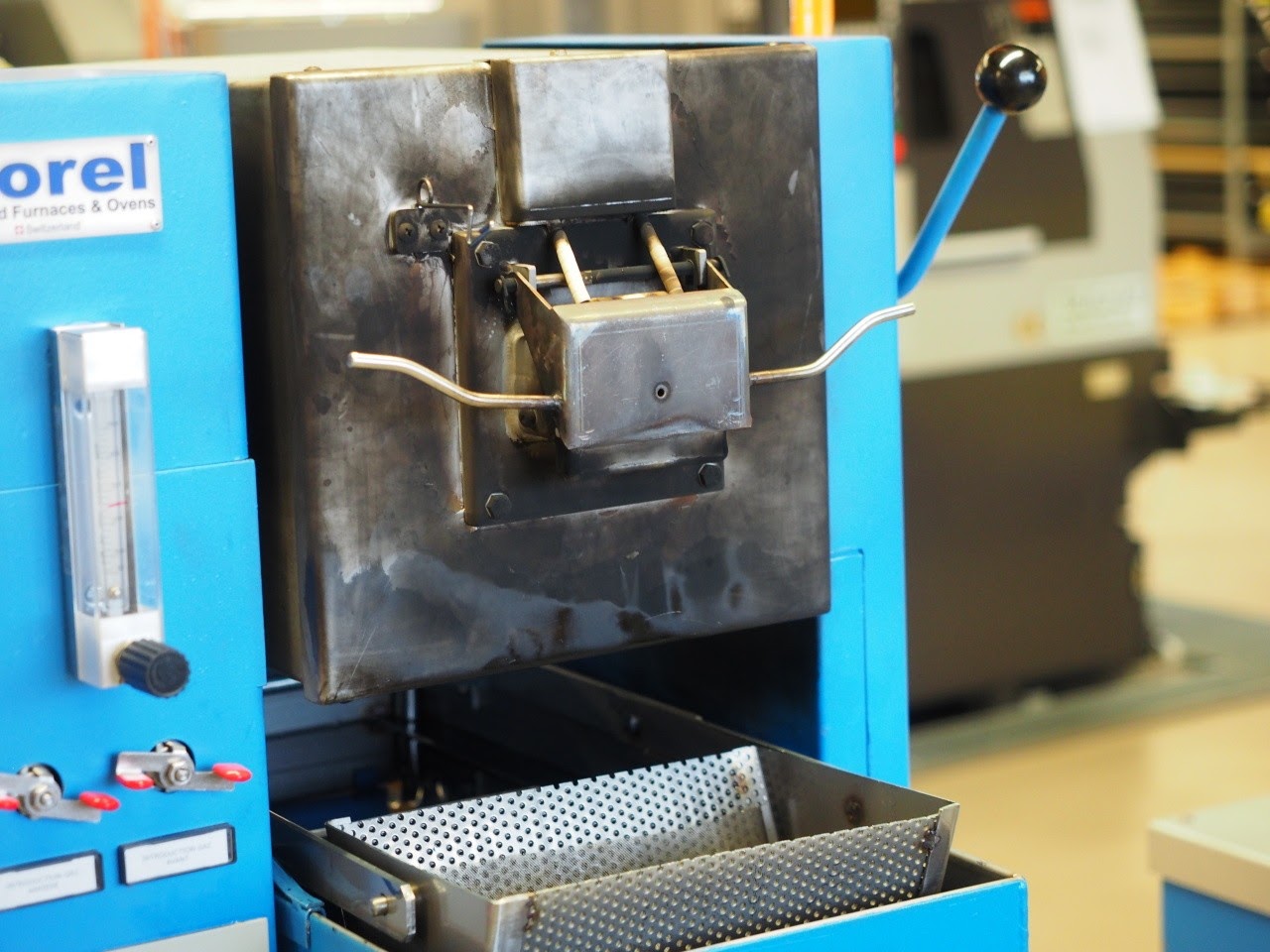
When you go to such lengths for an unparalleled level of reliability and durability of the parts, every detail counts. Romain Gauthier explained and demonstrated even how important it is to have a minimal distance in between the opening of the furnace (tipping down to discharge the part) and the oil bath beneath to cool the parts immediately in a controlled way. Not necessarily a consideration you would expect in artisanal watch production!
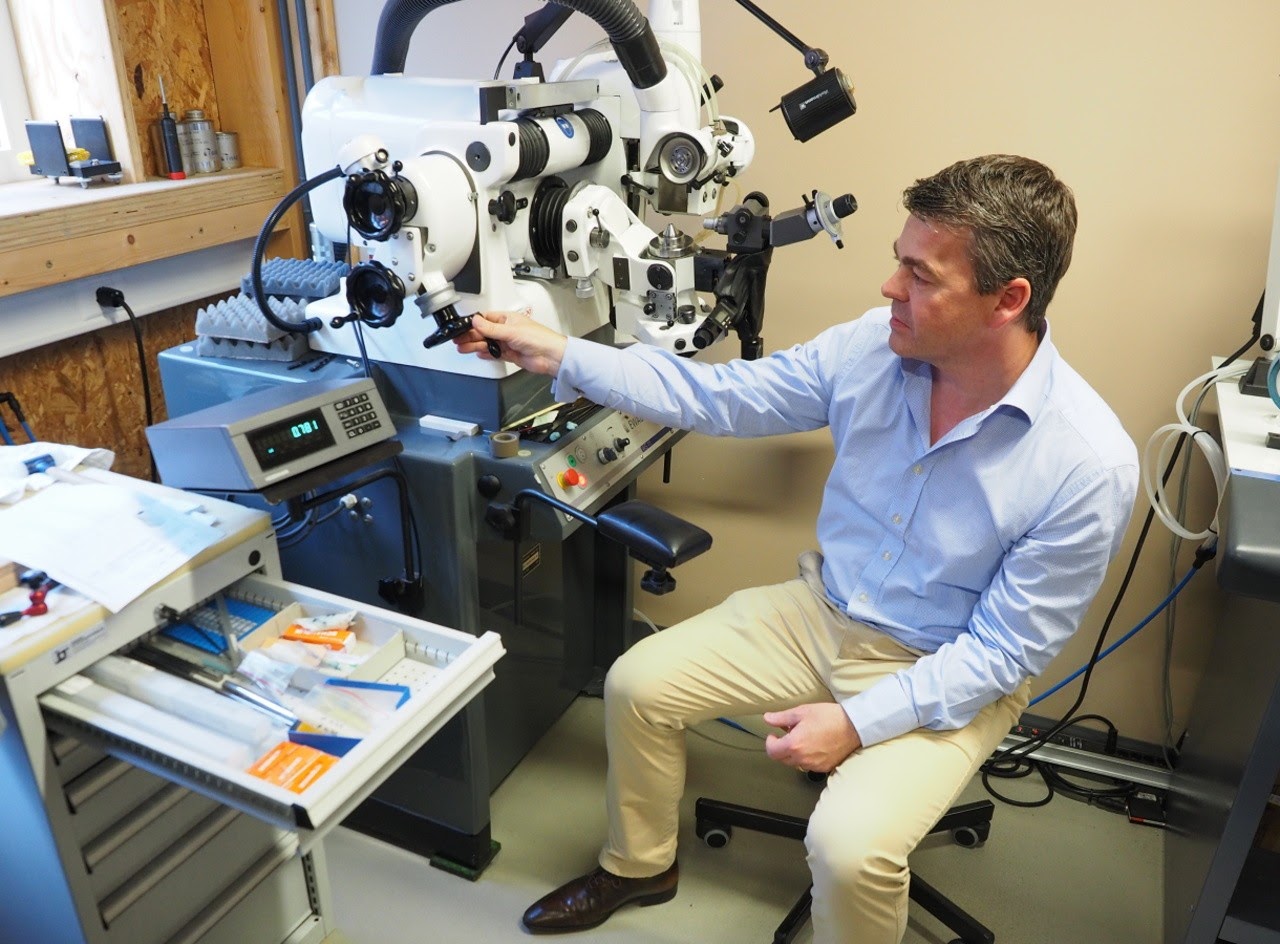
As a stickler precision, Romain Gauthier has installed a EWAG machine to produce made-to-measure tools for the production and watchmaking operations, tools (e.g. milling tools) that are not available commercially. It is manual, but he demonstrated how it can work to the micron.
Romain Gauthier’s choice of thicker movement bridges is based both on engineering and aesthetic principles. With his background in using and making precision machinery, he feels that something more robust, more resistant to shock is preferable to something lighter and thinner because it will last longer.
While the architecture of the watches gives even the casual observer the impression of a sturdy and well-engineered piece, from pictures of the watches I could so far not quite understand why collectors have described anglage and bevelling to be at Philippe Dufour’s level of perfection.
Here we could see that the chosen bridge architecture allows also to play with depth, because enough material is available. As many as 90 hours are spent on hand-finishing the whole movement of the Logical One.
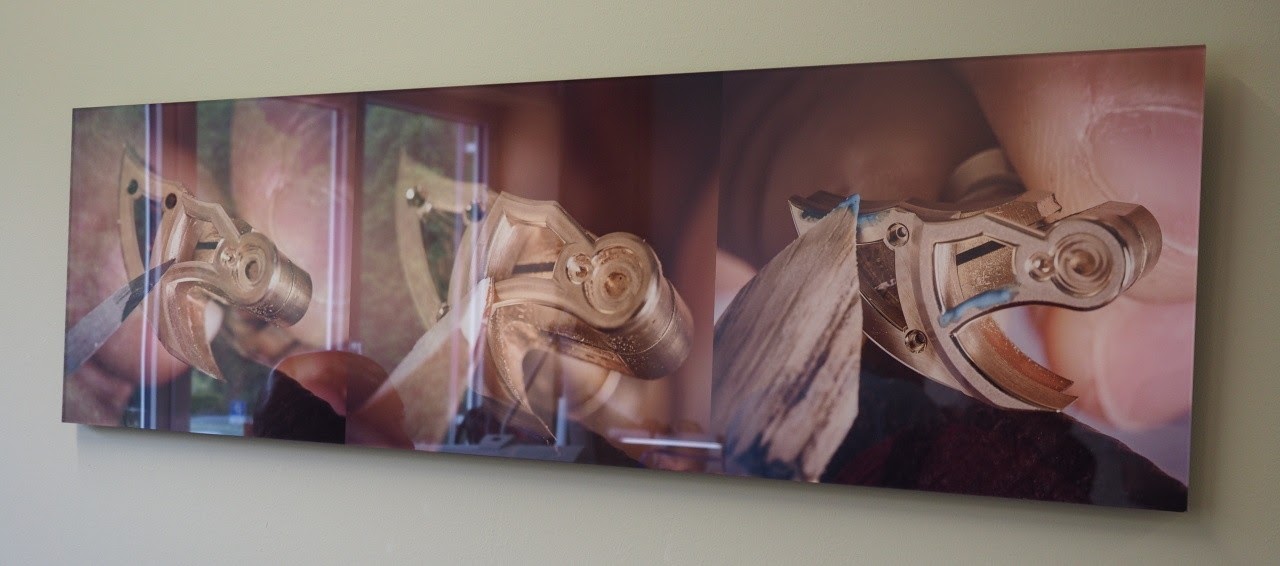
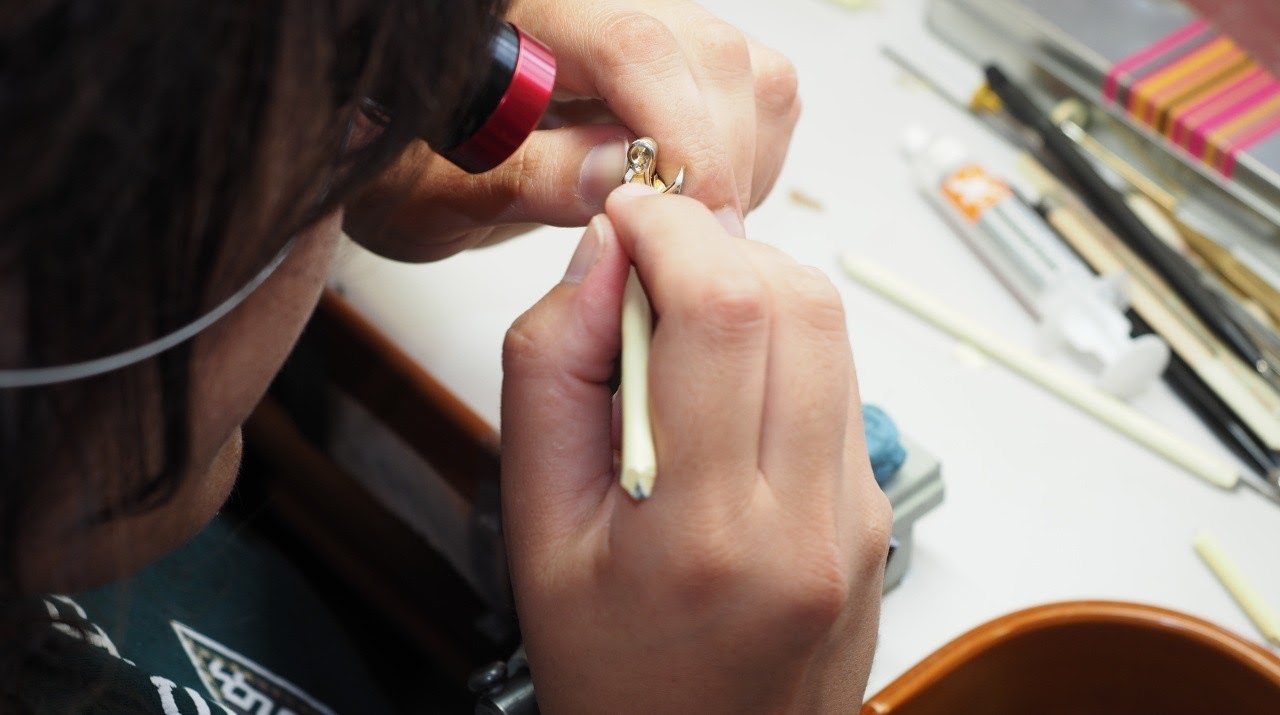
How metal pieces engineered like machine parts for optimal strength and precision can become jewels was seen in the anglage atelier (Logical One parts). The time involved for hand-created and hand polished bevels, hand-frosting, hand-created and hand polished countersinks and graining is immense:


Left: Upper bridge for constant force mechanism in titanium (freshly machined part at front, hand finished one at back); 20-22 hours. Right: Lower bridge for constant force mechanism; 15-17 hours (Copyright photos: Ian Skellern for Quill & Pad; images used with permission of author)
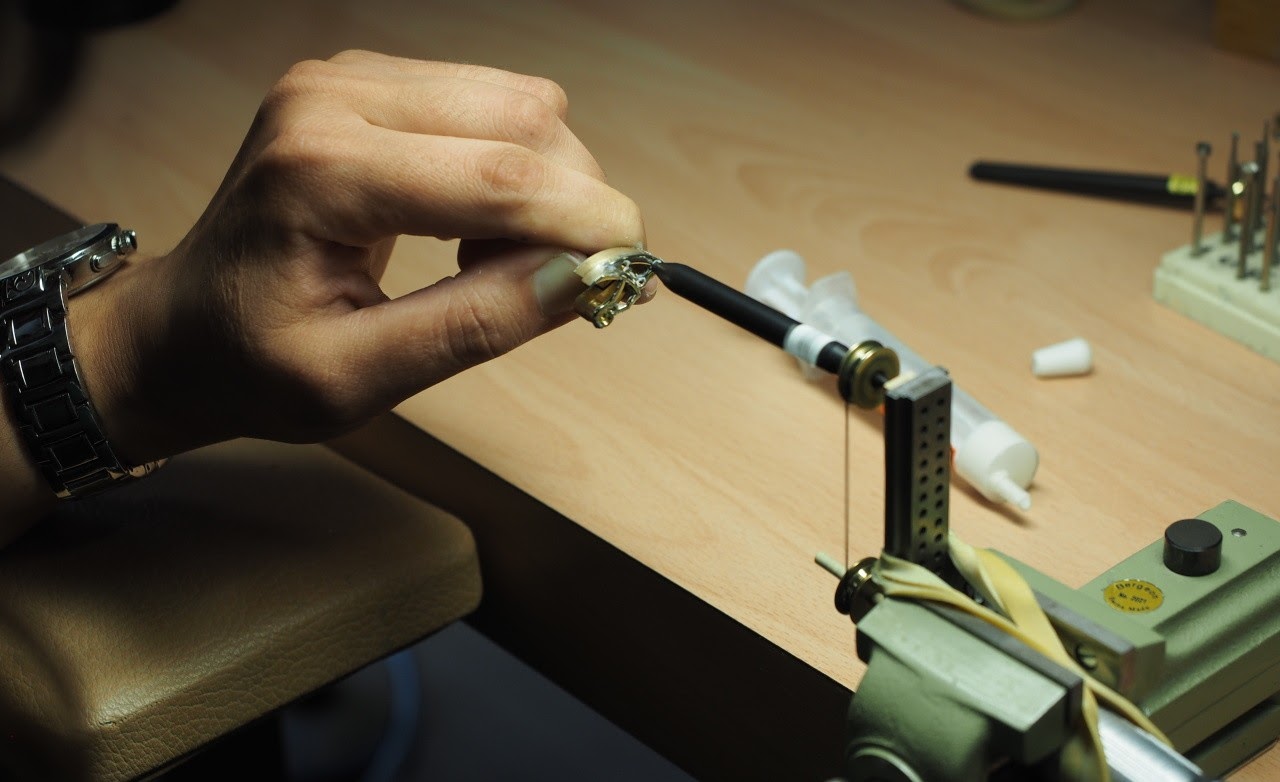
So, up here the same procedures and age old techniques (like polishing the bevels with a gentian wood and diamond paste) are applied as you expect it in artisanal watchmaking. The boss collects even the gentian wood himself while walking with his family in the Risoud Forest around September time!
In his own office/construction station Romain Gauthier explained his ethos to create movement-first timepieces where the movement development is really dedicated to the chosen complication.
“Unique Pieces” are available, though the uniqueness is limited (in my terminology) to different decoration (surface treatment and colour of plate, bridges and dial colours, and graphic design). For customers who wish a more obvious special decoration, the Logical One is offered as a “Secret” version, where a hunter case gives a canvas for unique decorations, creating real art pieces.
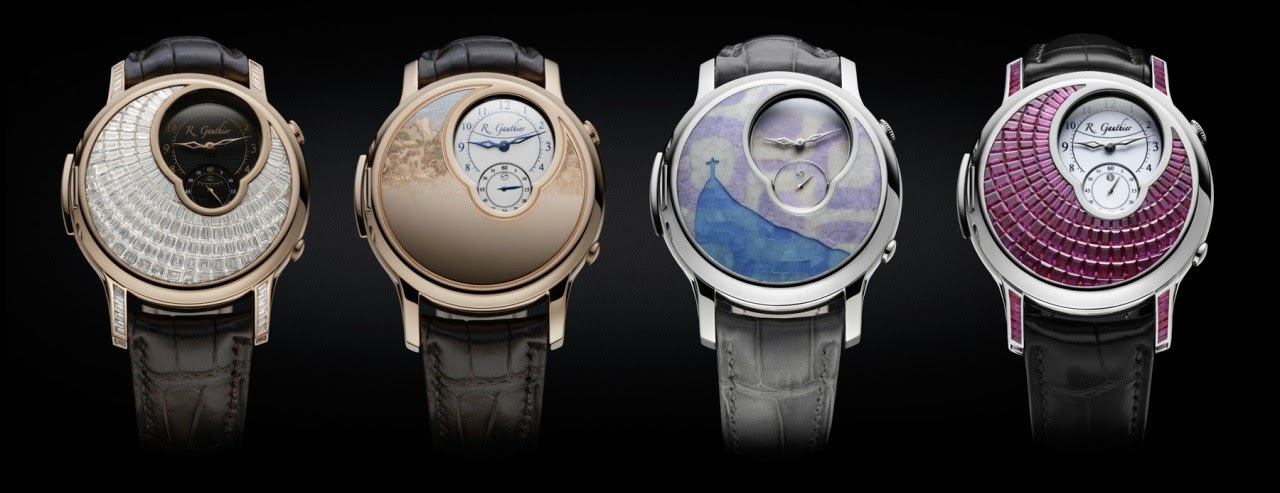
But you cannot just ask for an additional function. This would impact the energy delivered by the mainspring barrel, lowering the power reserve with probable implications of the timekeeping precision. But Romain Gauthier does not accept any compromises with the watches bearing his name. Well, you can have a one-off with, e.g., a second time zone display or a world time function. You only have to be willing to pay for new calculations, new plans and new prototypes. For all this research, development and production to be concentrated on a single, unique piece, the price of a Prestige HM (used as a base) would increase about threefold. It needs backbone to defend an ethos as rigorously as Romain Gauthier does, particularly in today’s economic environment.
While I liked the visuals of Romain Gauthier’s first model – the Prestige HM – with a traditional dial better before my visit, the technical and a bit bare front views of the Logical One and the Insight Micro-Rotor are more likely what Roman Gauthier (the man) stands for. If you want to show off engineering principles, precision and perfect surface treatments, it would indeed be a pity to hide all this from the watch’s owner. To my amazement the combination of a bold, engineered architecture combined with traditional detailing at the highest level works very well, making Romain Gauthier’s watches very distinctive. But to fully appreciate it, you need to have the watches in front of you.
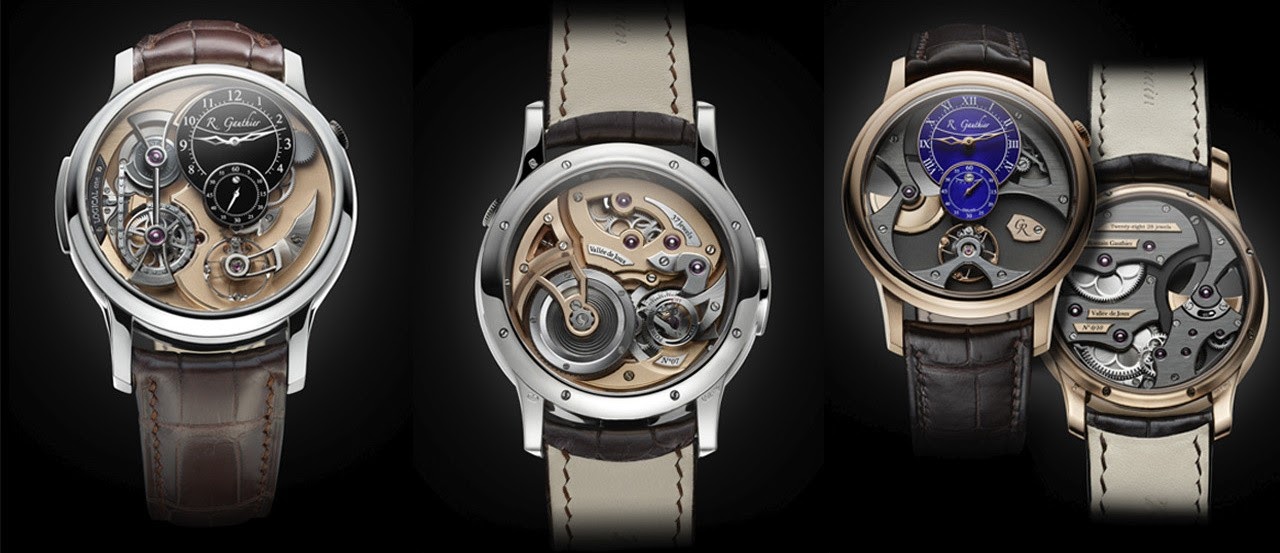
Denis Flageollet (De Bethune)
De Bethune put the slogan “Not Doing More But Instead Doing Better” on its website and you could find some almost hidden remarks in the press about the intention to reduce series production and further unique pieces. But there is hardly anything to be found on the web to support this offer to enthusiasts (though, with a new website in the making, this should change for the better soon). Only since the recent reorganisation at De Bethune, master watchmaker and co-founder Denis Flageollet has become a more visible person for enthusiasts and customers.
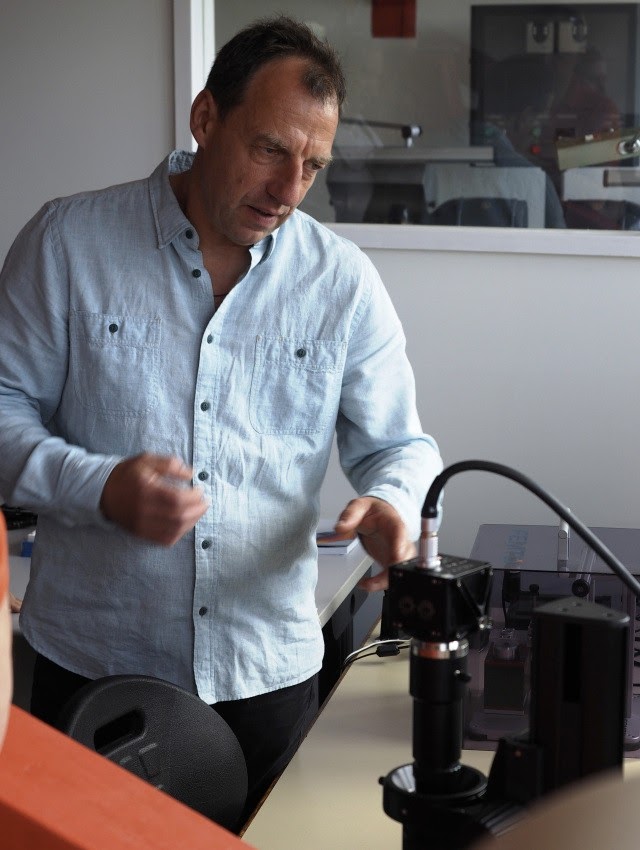
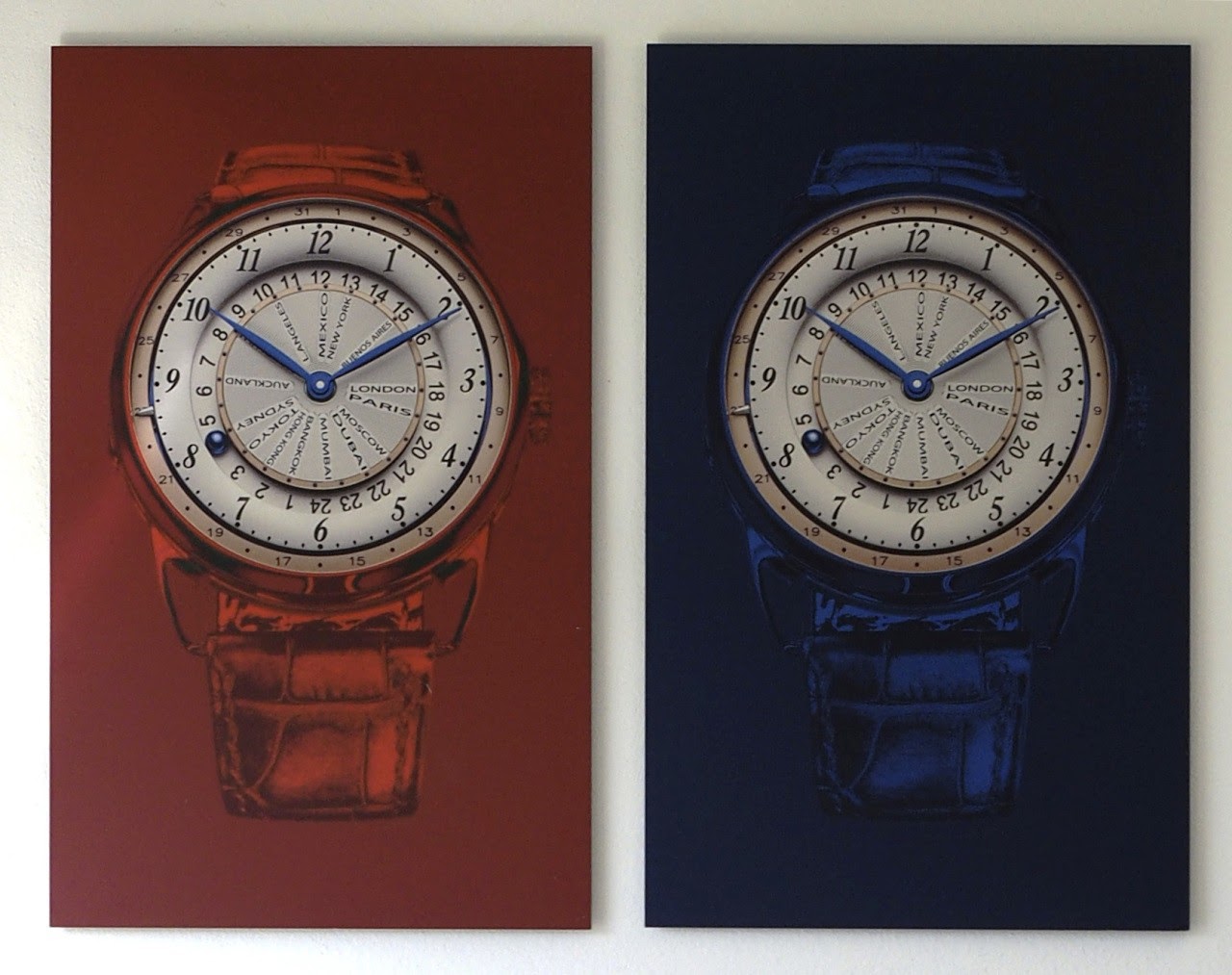

Unfortunately I have not found such information in the company’s literature or in other communications, thus it would never have come to my mind to ask for such alterations, believing you have to take what is officially promoted, or leave it.
But the production facilities we were going to see actually allow the customer to ask for anything. In the basement as well as on the upper floor we could then convince us ourselves that the know-how is all available in house. While not on hand in the same quantities as with Romain Gauthier, there are the milling machines available, including the bar feeding mill, producing the tiniest parts like hardly visible pinions and the “stars” (to be fitted on the blue dials of some models) from bars of raw material fed automatically.
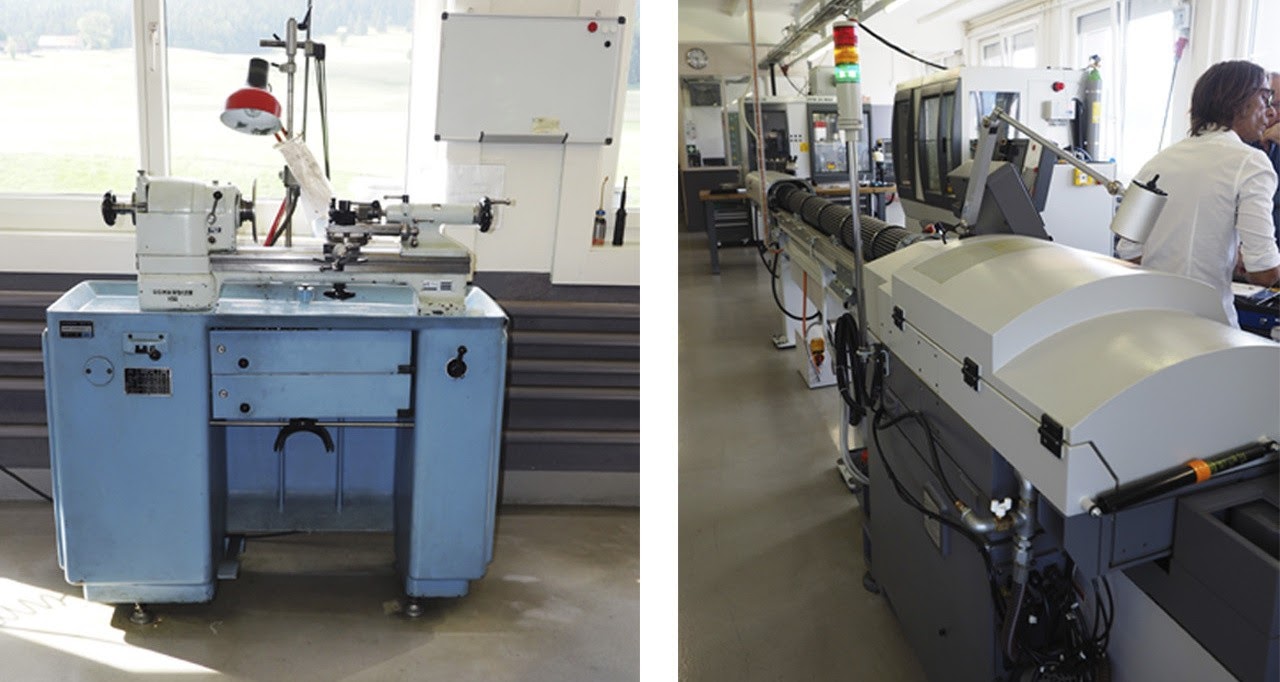
The famous three-dimensional moon is milled in two halves of different materials, so that when heated on the flame (as demonstrated upstairs), only the one half gets blue with a very precise colour division due to the different material properties. Since the colours (from blue to purple to a brownish tint) are dependent on the heating time, the customer can again tell what is preferred, like with the other parts of the watches available flame blued.
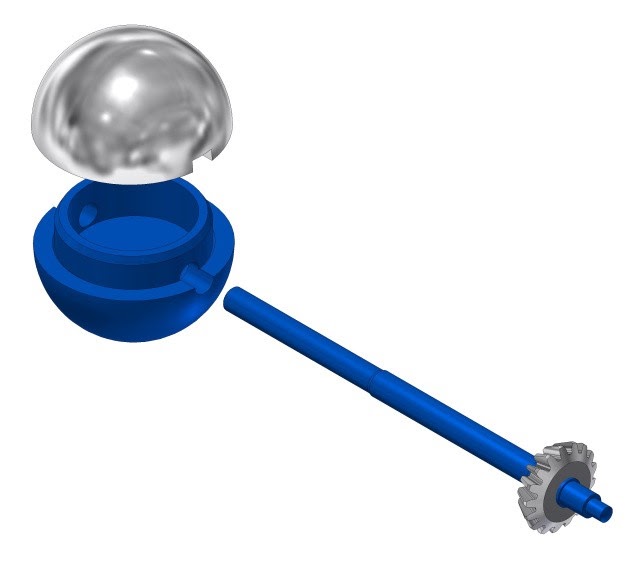
De Bethune finances the luxury of its own galvanizing center for the few watches they produce. The bathes are used to colour different parts of the movements, mainly in black, ruthenium or rhodium colors, or for dials. If a customer would be interested in red or orange hands, they could be produced immediately.
Definitely not available by galvanic process is blue. De Bethune flame blues all steel parts and they are the only manufacture in the world mastering the natural oxidation of titanium. Thus, blue titanium is obtained only by a thermal treatment in a special oven at around 730°C.
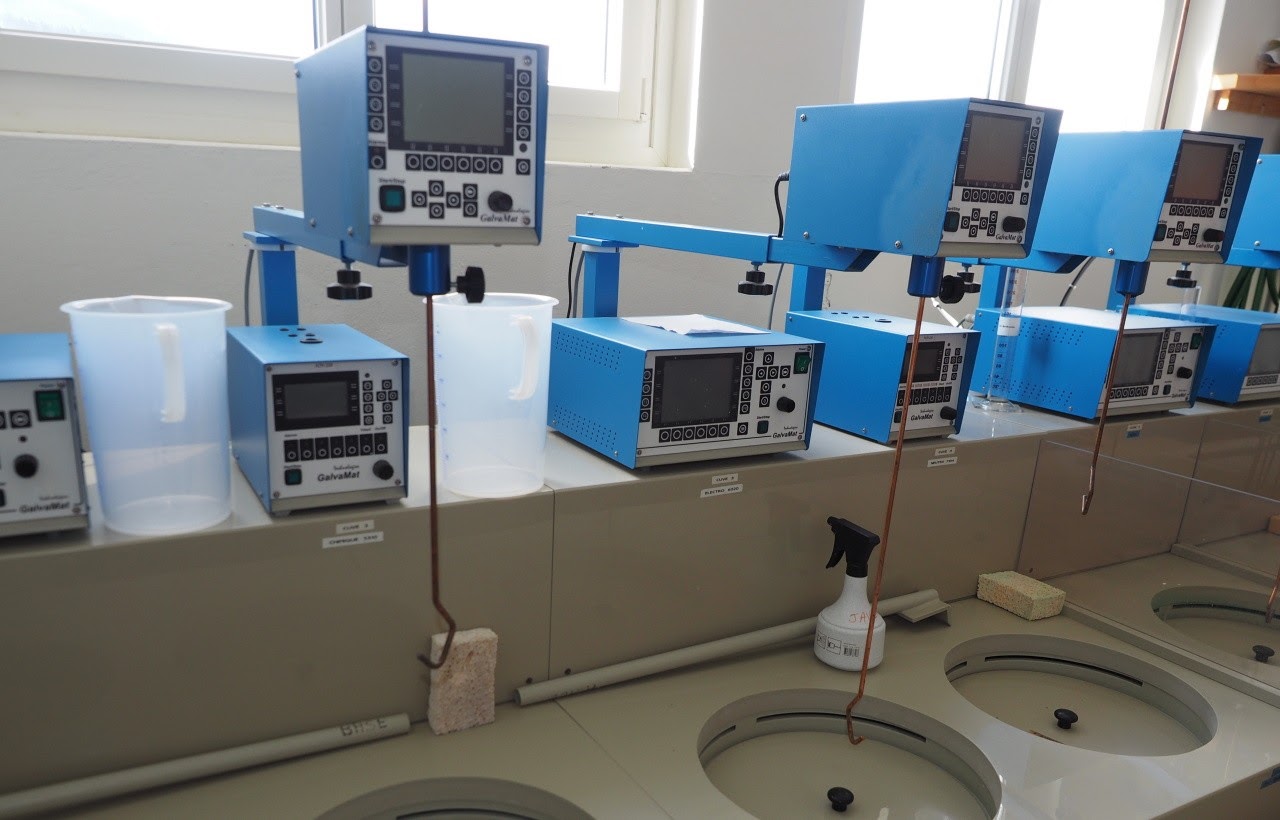
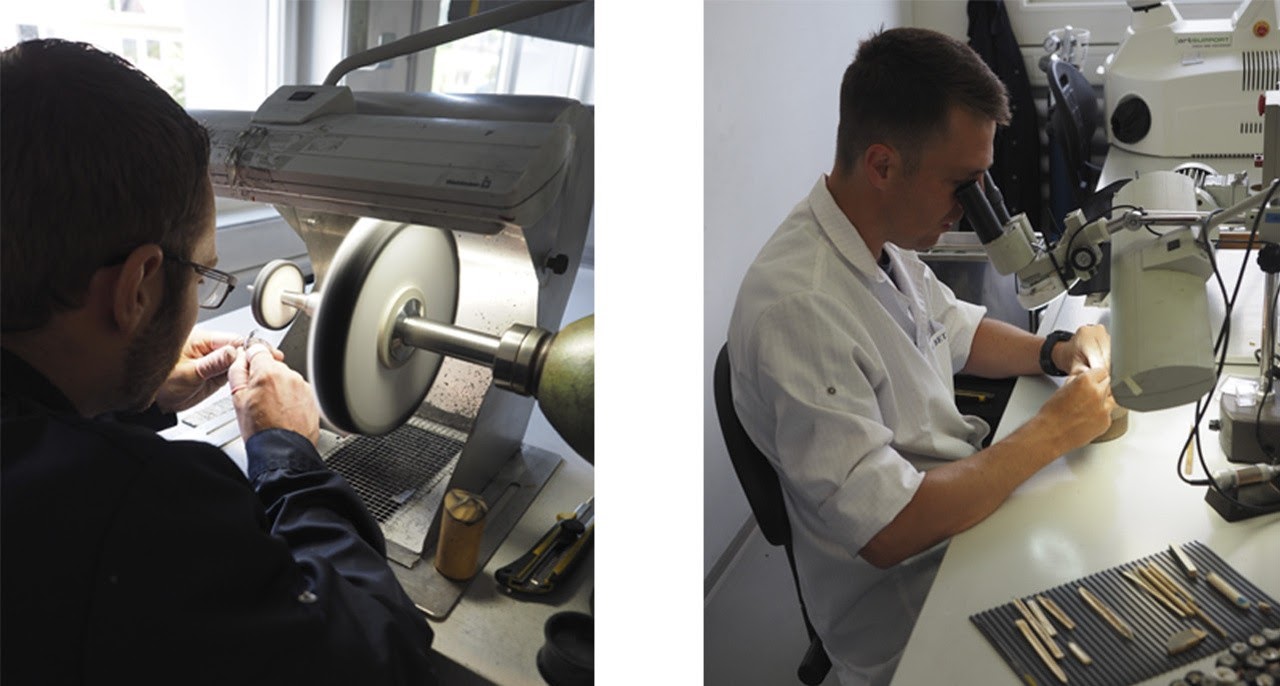
If “stars” are part of the dial decoration, the constellation can be chosen by the customer. And these “stars” are milled pins, with stems almost invisible which have to be threaded through holes in the dial by hand. I got dizzy just looking on when they are fitted, one by one. Seeing all this incredible detail work going into the watches gave me a new understanding for the required price.
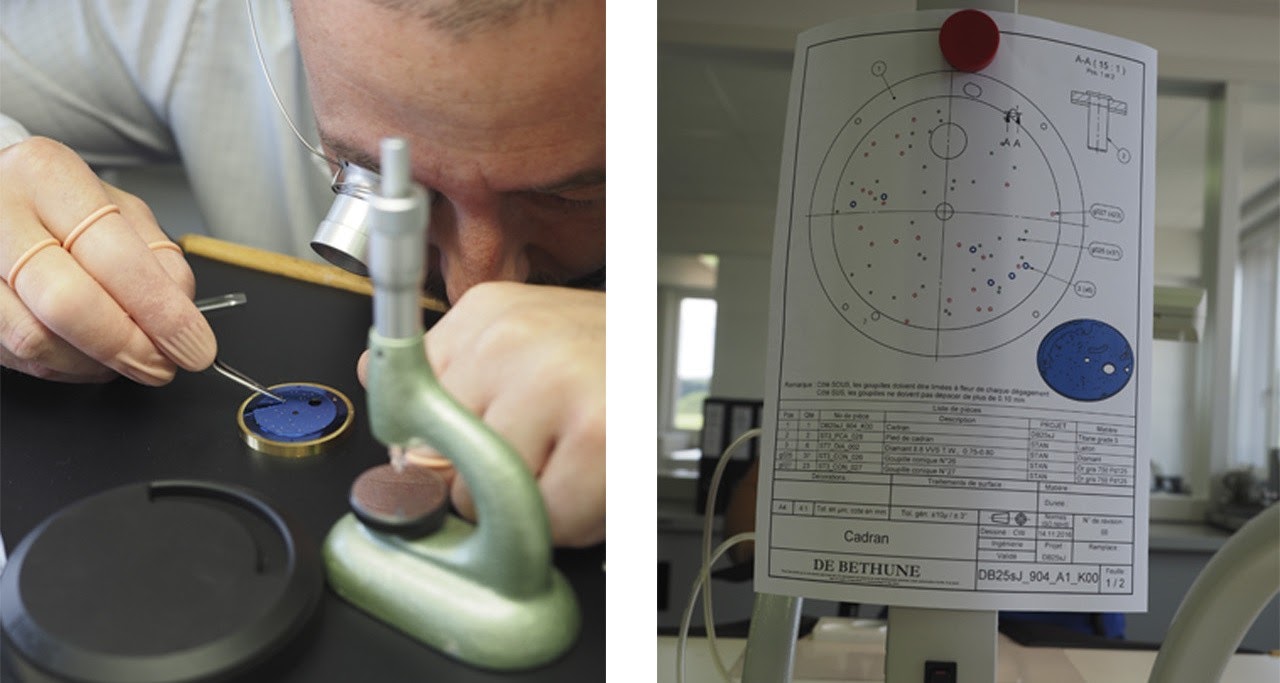
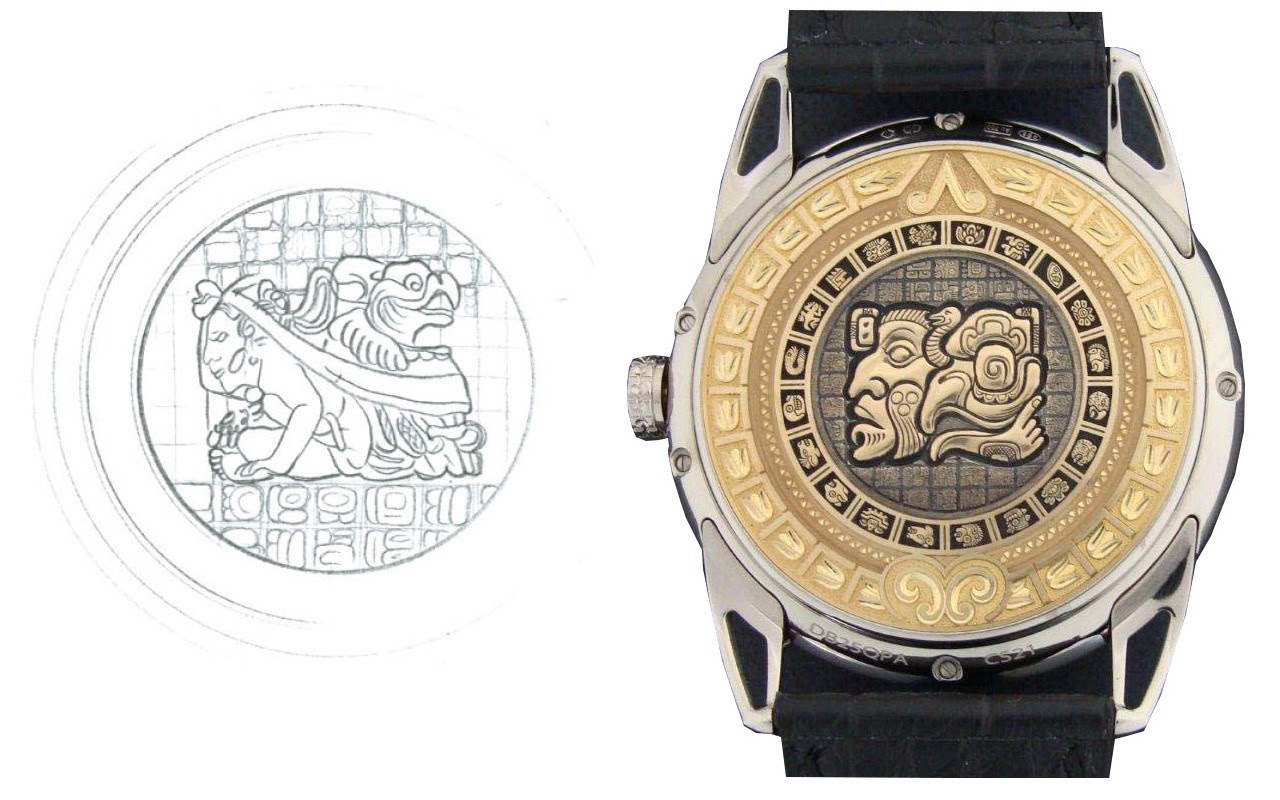
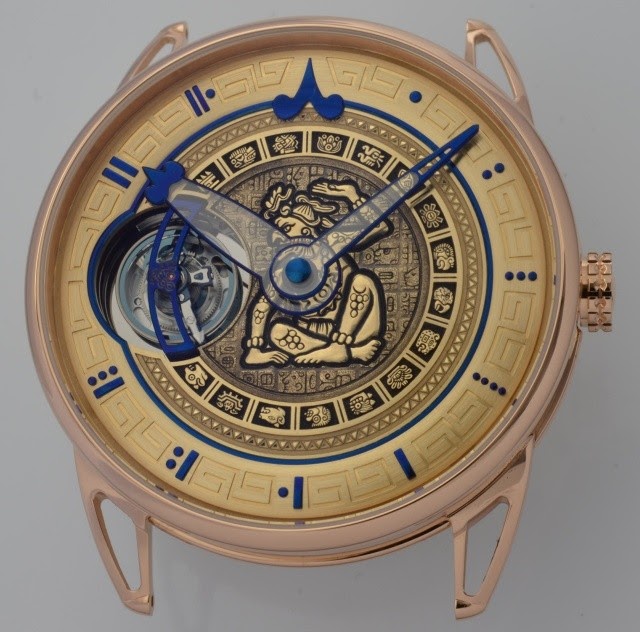
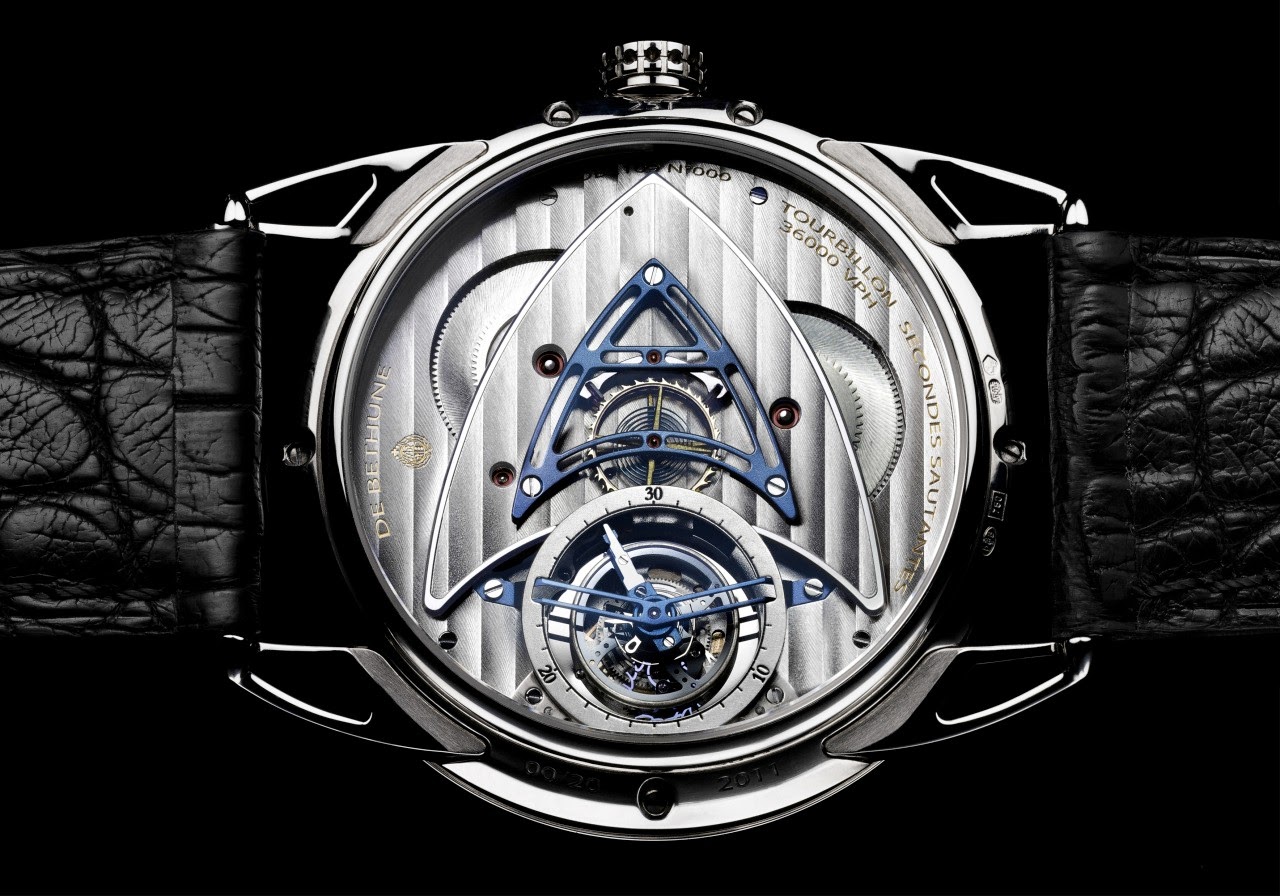
Supported by the enthusiasm of Denis Flageollet to try out new ideas (also when suggested by the customers) and his openness, I got a completely new picture of De Bethune, with an empathy for the brand I had not before. It showed me, how important the real people behind a brand are; the creation of goodwill is in my eyes totally dependent on them and not on standardised publicity with some “brand ambassador” who has nothing to do with the watches and the way they are built.
Denis Flageollet explained how he loves technical challenges (De Bethune is a pioneer in the use of titanium and silicon within the watch industry; they have also their own patented balance-wheels) as well as welcoming customers to come to the manufactory to discuss them. To really take full advantage of what is possible, it helps to see materials and samples right in front of you. Furthermore, the master watchmaker explaining all of it to you gets rid of misunderstandings. Like with Kari Voutilainen we went to see later on, De Bethune offers such a vast choice in creating a personal watch, it would be a real pity not to use it.
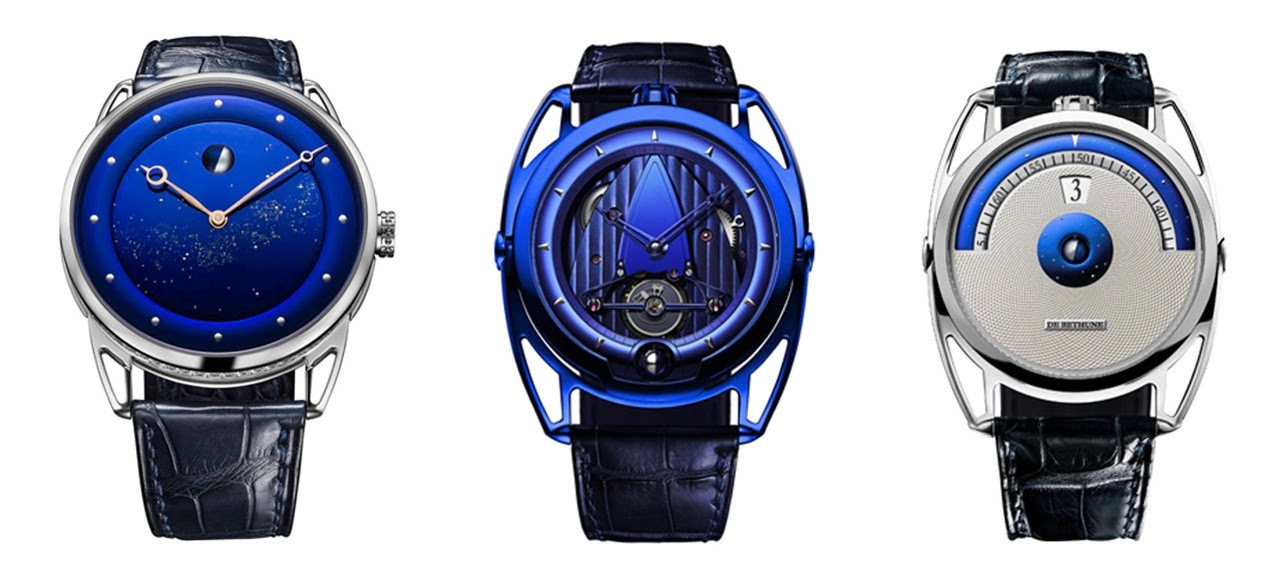
(Photos: De Bethune SA)
Kari Voutilainen
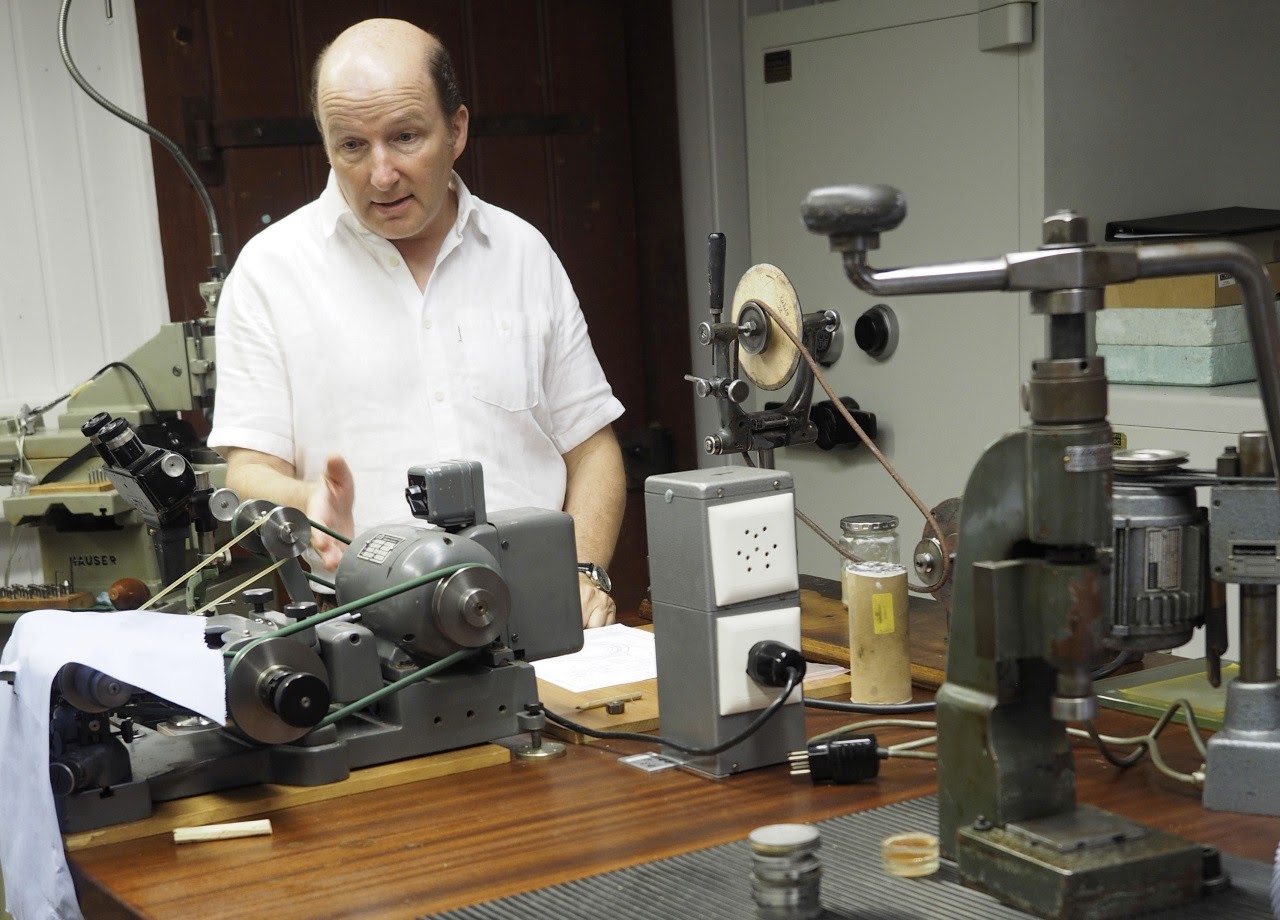
When copywriters are let loose, even the sincerity of Kari Voutilainen can be enveloped in a subtle haze, giving a completely romantic (and false) picture of watchmaking à la George Daniels. Have you, e.g., ever seen a publicity picture of Kari Voutilainen’s basement with the specially adapted CNC mills? Not only we (as all visitors) were led here first, but also watchmakers joining the atelier have to start here. The reason for the latter is that for Kari Voutilainen not the non-descript “passion” is paramount (even though it is extolled in his publicity material), but respect he is demanding from his watchmakers for the work of the two machinists at the CNC mills. “Passion” is just a given, otherwise you have nothing to look for at Kari Voutilainen’s place.
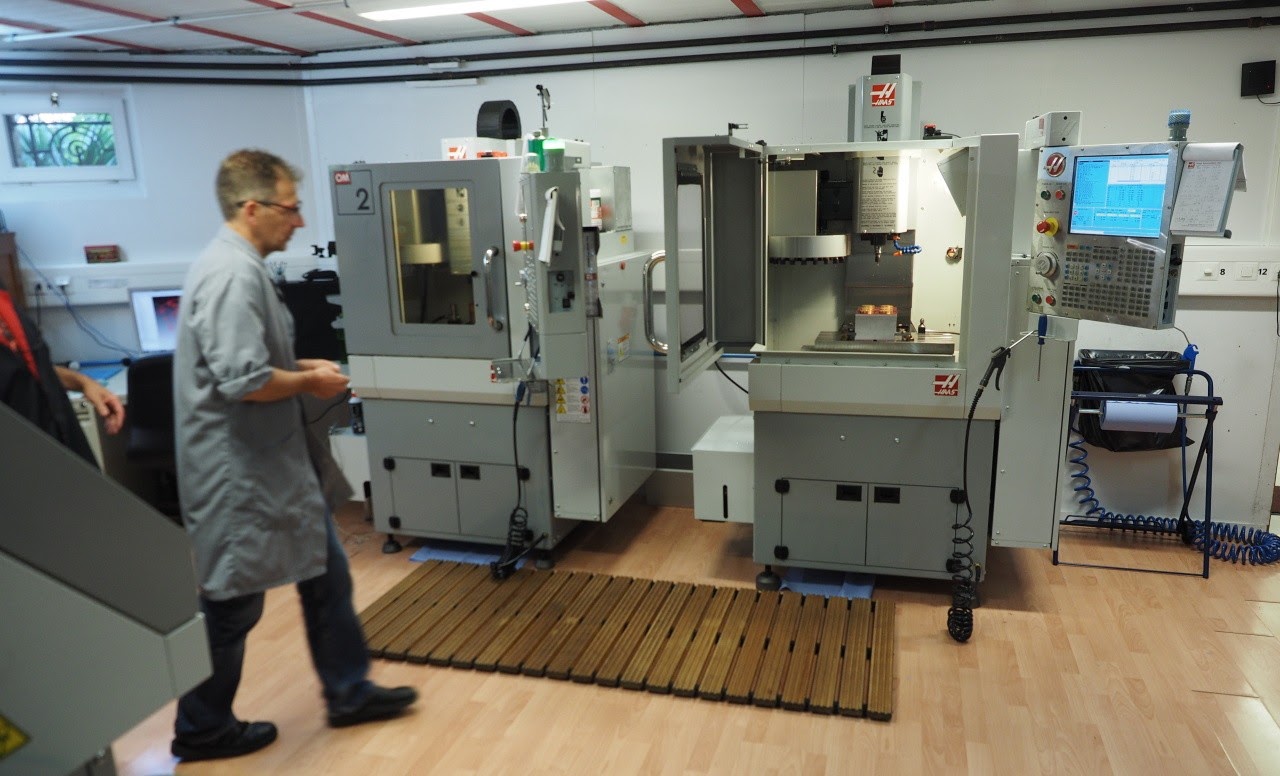
Kari Voutilainen sees modern production methods for the basic parts he needs for his artisanal watches as an absolute necessity to ensure consistent quality. He is proud about his industrial production capabilities since many years (now with his own dial factory added in a neighbouring village), also to safeguard real independency. He explained that without these USA sourced machines (which he had customized in Switzerland to bring them on a completely different level of versatility) he would never have been able to build the quality watches he does. He was not only fed up with the sourcing problems for small quantities of parts, but often their quality too. Therefore, Kari Voutilainen mills, e.g., even the screws for his watches. They have a coarser pitch than the watch industry standard (to avoid damage when frequently assembling and dissembling parts in trial fitting for detailing) and are harder than what is available on the market. Without these milling machines the quality parts required for 35 to 40 watches could not be produced. So Kari Voutilainen does not hide this basis of his in-house production.
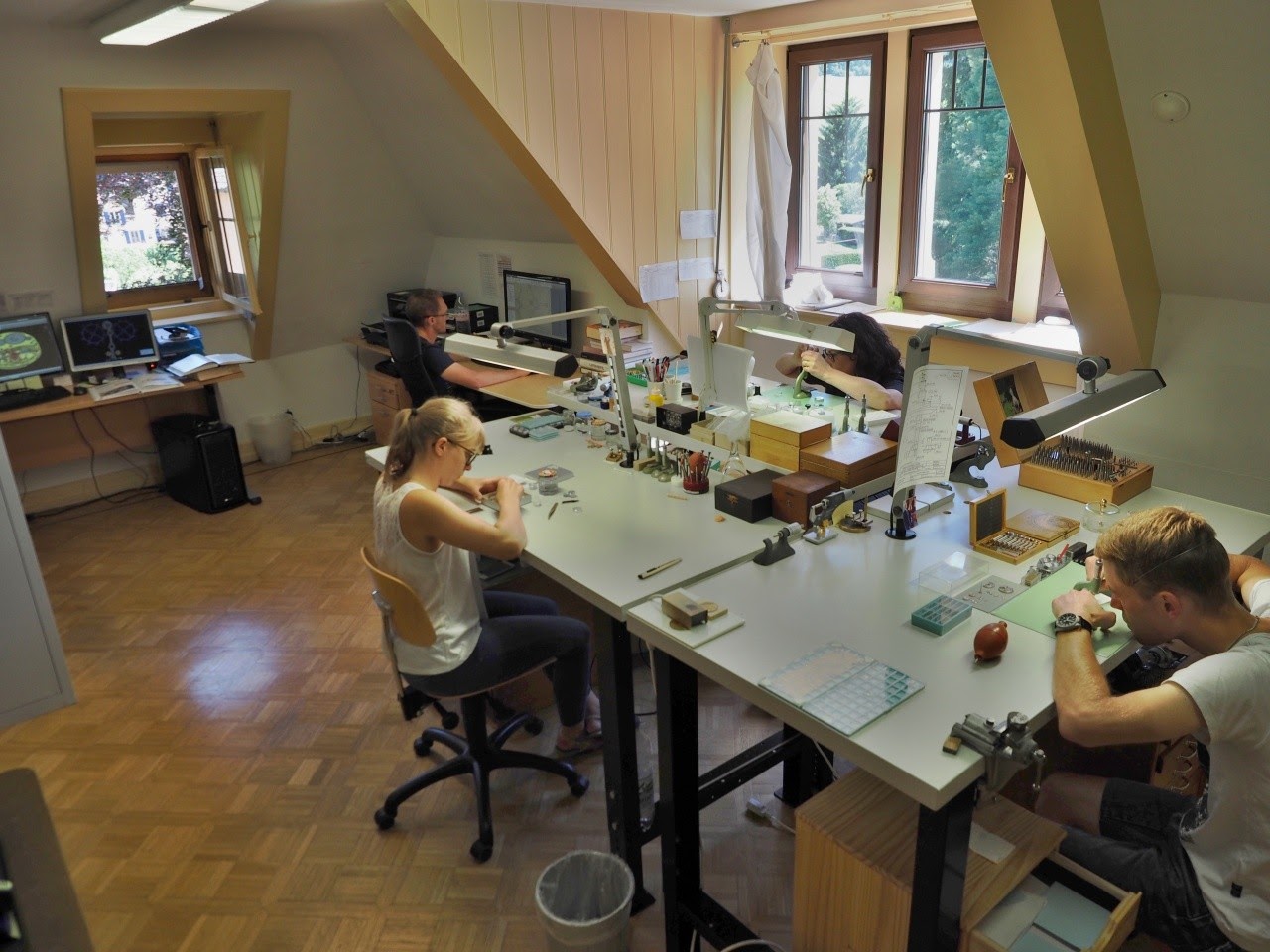
Furthermore, Kari Voutilainen stresses that his intention to create more unique pieces in future requires the two fulltime construction engineers he has in-house, and not only because he prefers to work at the bench to sitting in front of a CAD screen: All his unique pieces (those with a bit more than a different decoration) require a new movement construction, starting with the plate. The sample of a GMR model with the power reserve indication not at 12 o’clock, but at 2 o’clock, demonstrates this: The movement cannot just be turned a bit within the case for the new arrangement, rather it had to be constructed from the ground respectively the plate up.
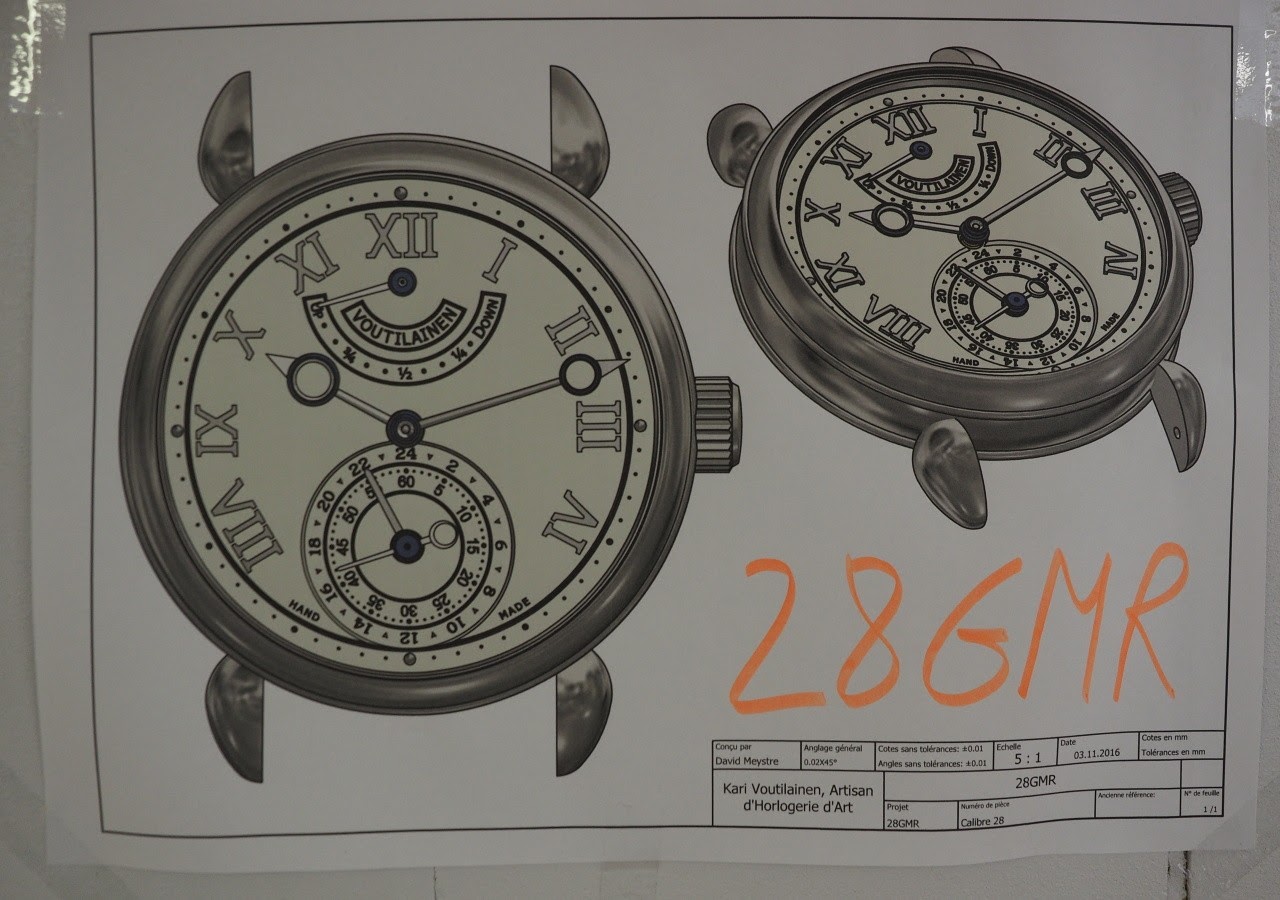
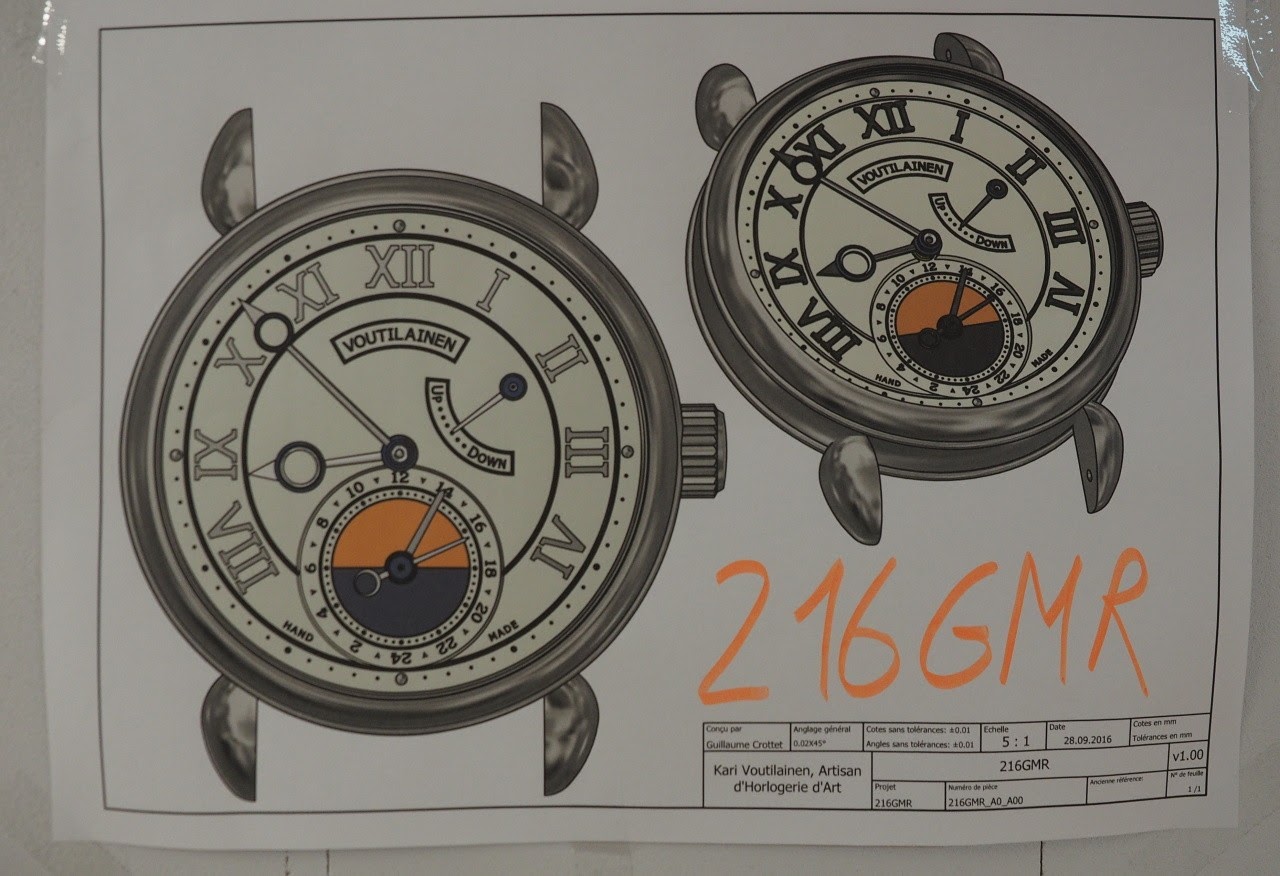
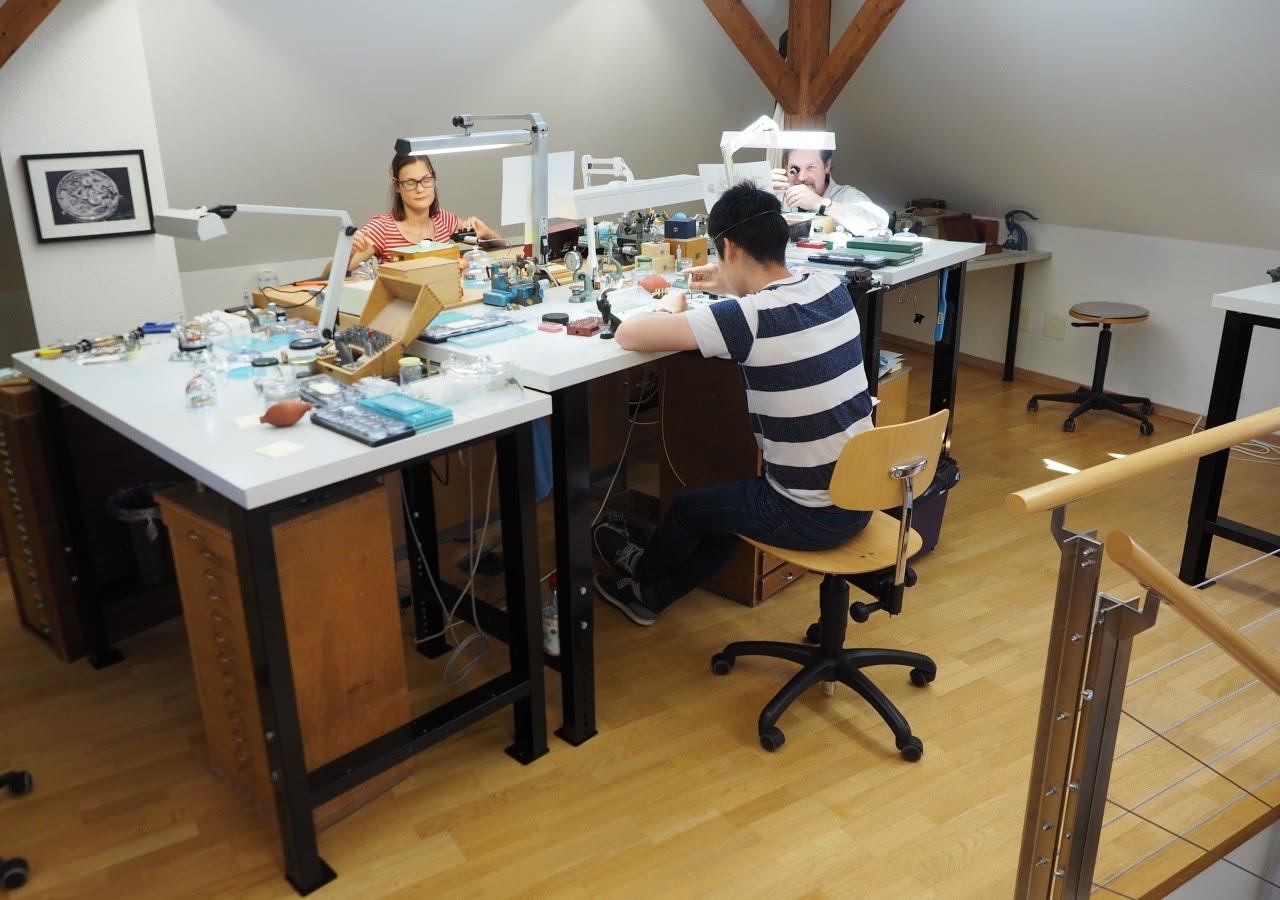
While his watches are famous for the visible detailing, for Kari Voutilainen their robustness is equally important. An extra thick thread for the crown and a patented dial locking system allowing to build “beefy” movements outside the case support this goal. Once the movement is fixed inside of the case, functions can be checked and tested, and only then are dial and hands set on. This is not industry standard, because usually dial and hands are fitted before lowering the movement into the case, and then it is no longer possible to work on/adjust the movement because there is no access to it with tools.
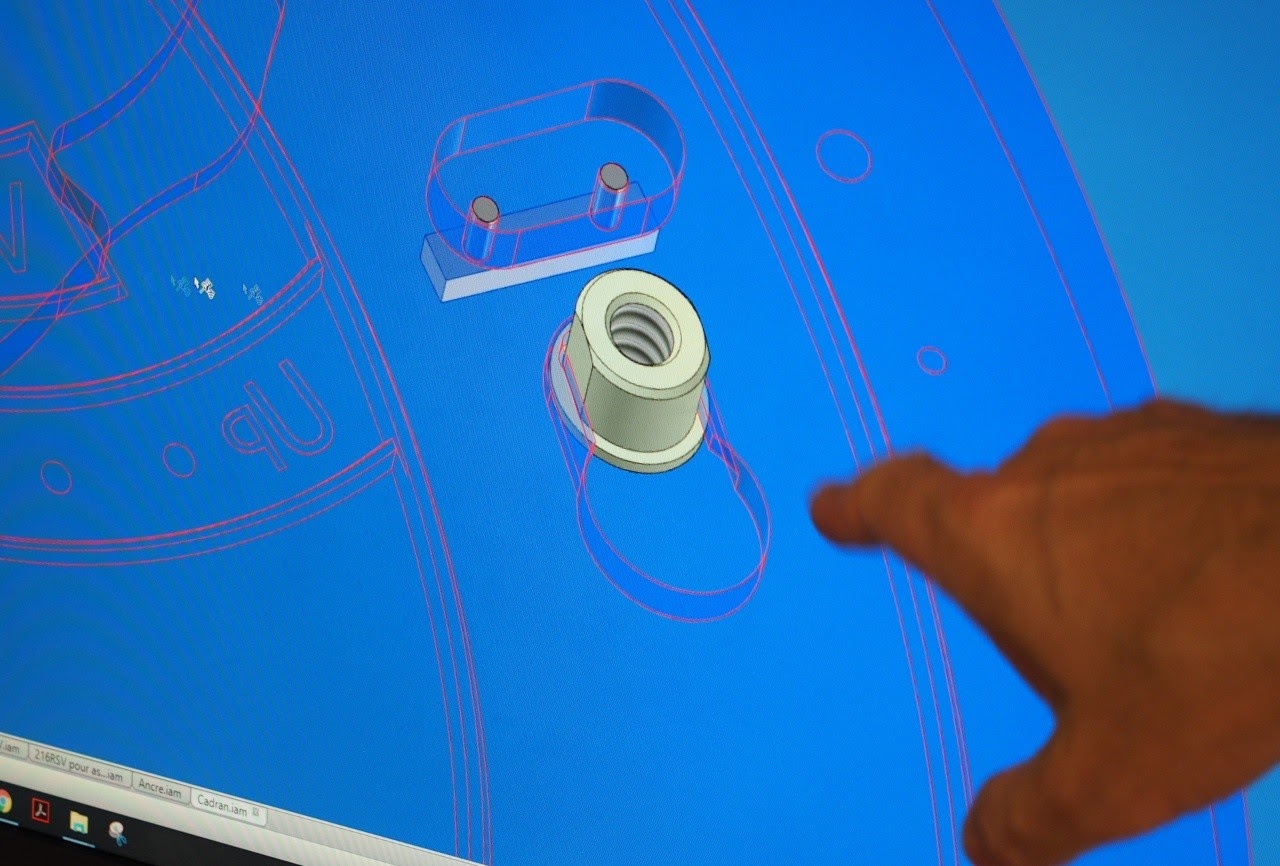
Again, you realise perhaps only what well built “machines” you get from Kari Voutilainen when listening to him on the atelier tour. And I realised how fair his prices are for the unique pieces, which would not be possible without such a “well-oiled” production process.
Plans exist to expand the guilloche “department” by hiring a third specialist and refurbishing a further machine already found. The guilloche dials are a speciality of Kari Voutilainen, with additional demand from other manufacturers like Grönefeld and Sarpaneva. But this is not seen as an industrial process, which is why Kari Voutilainen wants to keep this work in the same rooms as the watchmaking.
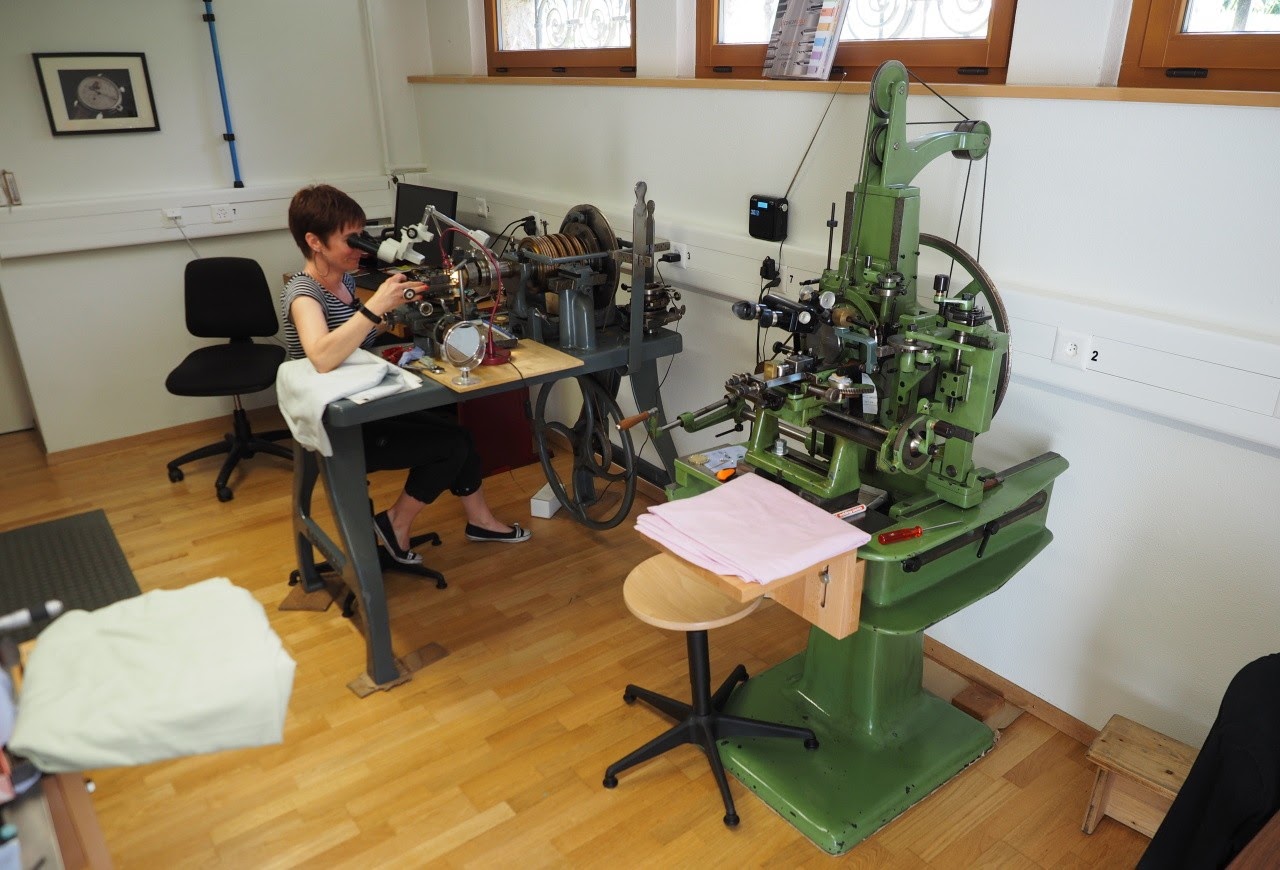
Unfortunately another big advantage of an atelier visit before ordering is not often used by customers: In the guilloche atelier the two ladies creating this trademark work have a thick sample book of their art at hand, including the wildest as well as most complicated guilloche patterns they have tried out, the instructions for a reproduction carefully noted down by hand. It seems most customers do not want to see these samples but rely on what they have already found pictured somewhere on the web or other publications. Though, you have to ask for these samples, because Kari Voutilainen is not offering them routinely, likely fearing to turn customers away because they can then no longer decide what they want due to an abundance of choices.
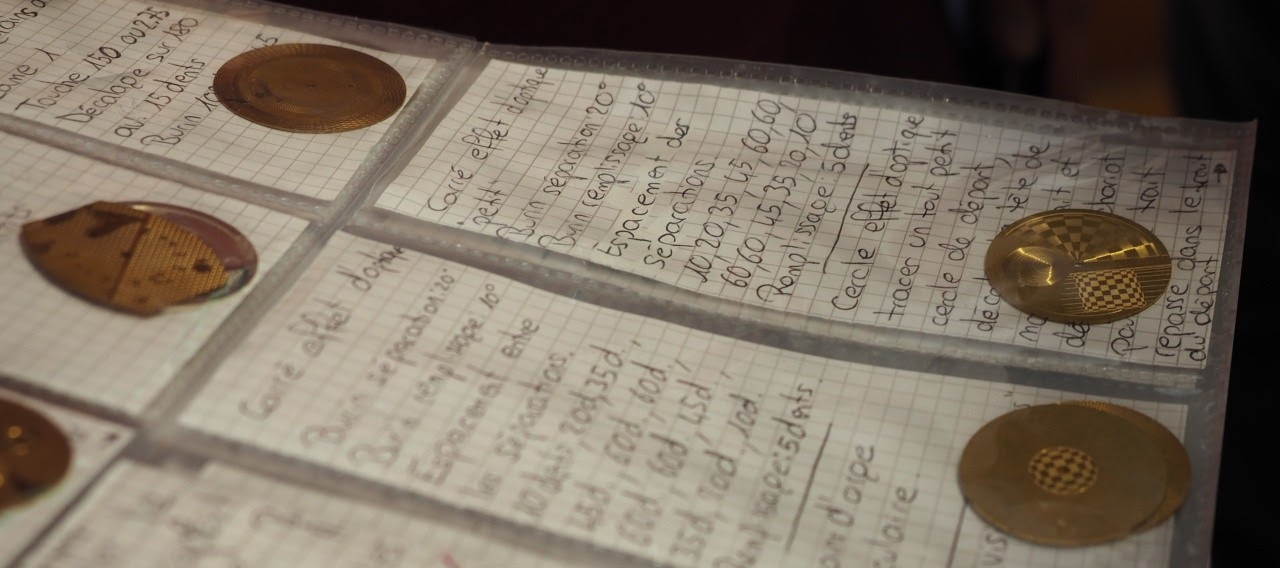
Even with the well-publicised watches of Kari Voutilainen, a lot of choices available would not even come to mind without a visit to the atelier. And I have now understood what it means to have a properly engineered and documented unique piece compared to one done “freehand” by modifying an existing movement to create a special watch for a customer.
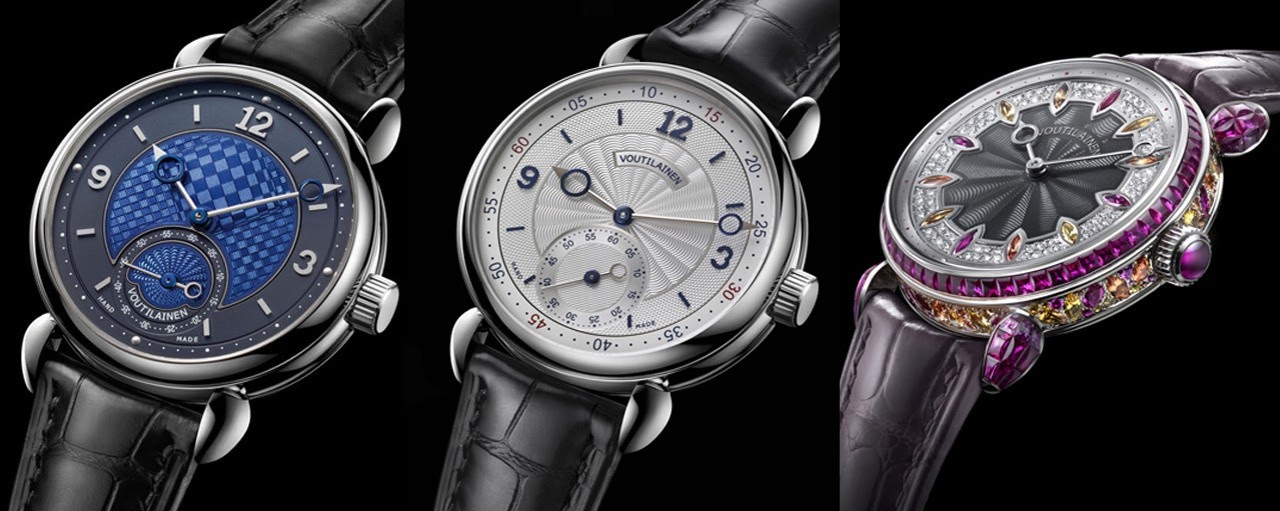
Vianney Halter
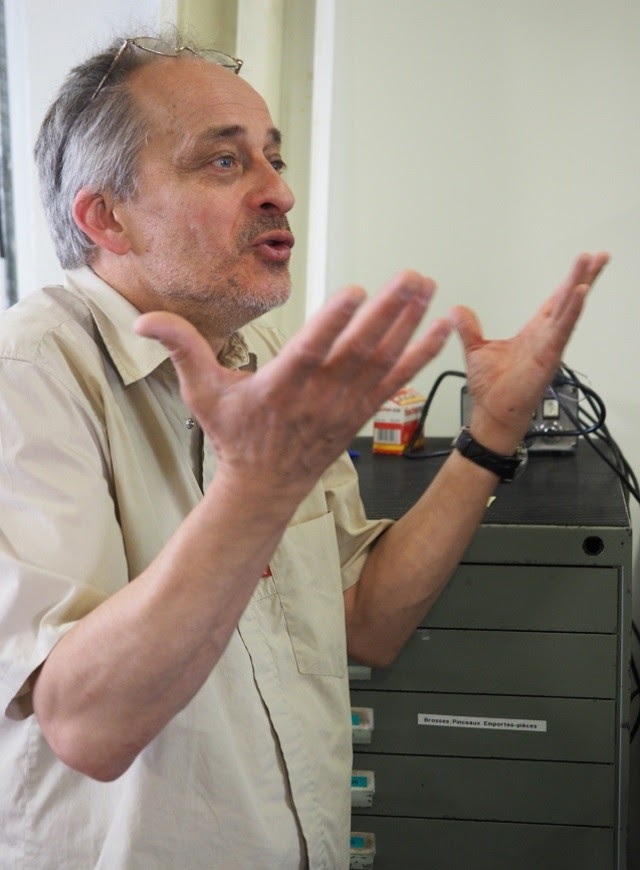
In the atelier of Vianney Halter we found row upon row of perfectly serviced ancient machines, all set up for specific work to create the multitude of parts (even required just for the cases) the traditional way. It is a completely different approach to high-end watchmaking to what we had seen before on our tour, and I could imagine what skill is required to produce every single watch (respectively its individual parts) by setting up these machines by hand (based on hand written specifications and the technical drawings, some lying beside the machines on the benches) and advancing the cutting tools with the hand wheels on the machines for a result that will be judged with the same magnifying glasses as used by enthusiasts for checking the CNC milled parts.
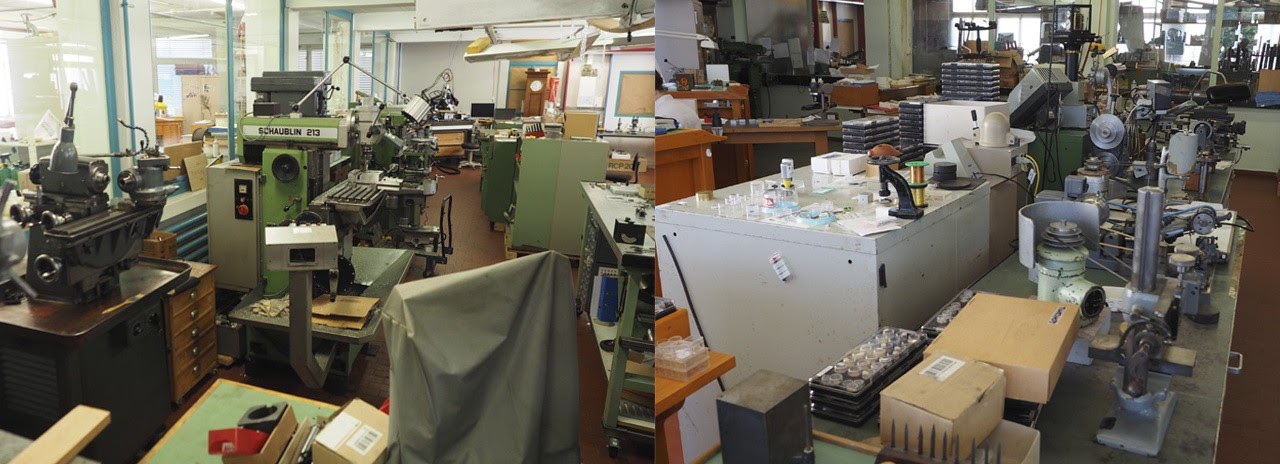
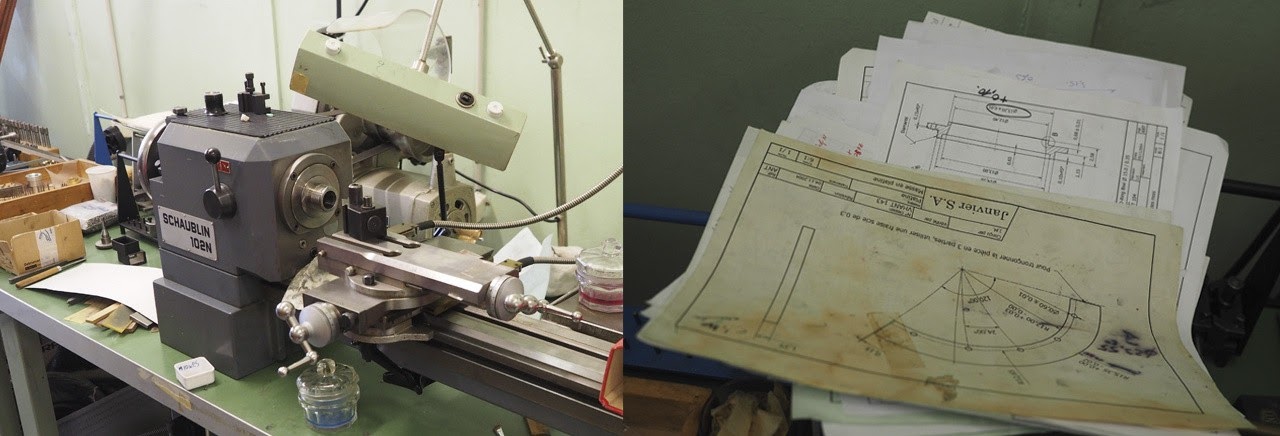
There is a CN mill even in Vianney Halter’s atelier, however it does not behave like the modern CNCs. He has built it himself based on a micrometric pointing tool SIP from 1943, with a 1981 control unit. He said, they are very reliable and precise, but it is only two-axis and more or less hand controlled. In other words, the production methods are very coherent with the thinking of Vianney Halter.
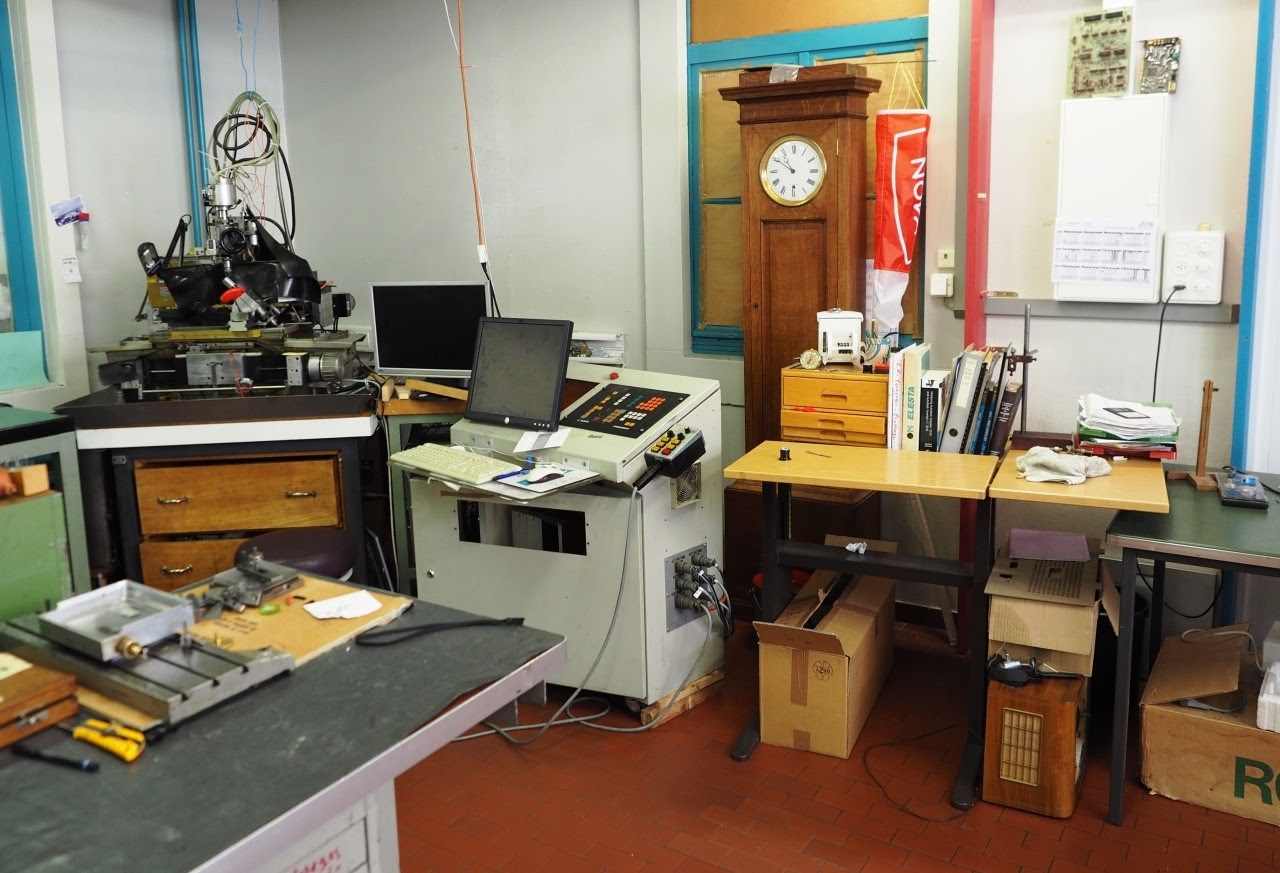
But the atelier visit has brought other valuable impressions: From reports I had read in the press (including web publications), I always had the feeling that Vianney Halter’s production must be highly chaotic and happing in between old engines and whatever he has collected, provoking slight question marks about the detail quality of the watches. But this picture I had in my mind turned out to be wrong. Even though Vianney Halter’s atelier is currently in temporary rooms due to building work at his own place, all the machines could not look in better condition or better organised. He even works at two different assembly benches, to further divide work according to the required cleanliness for it.
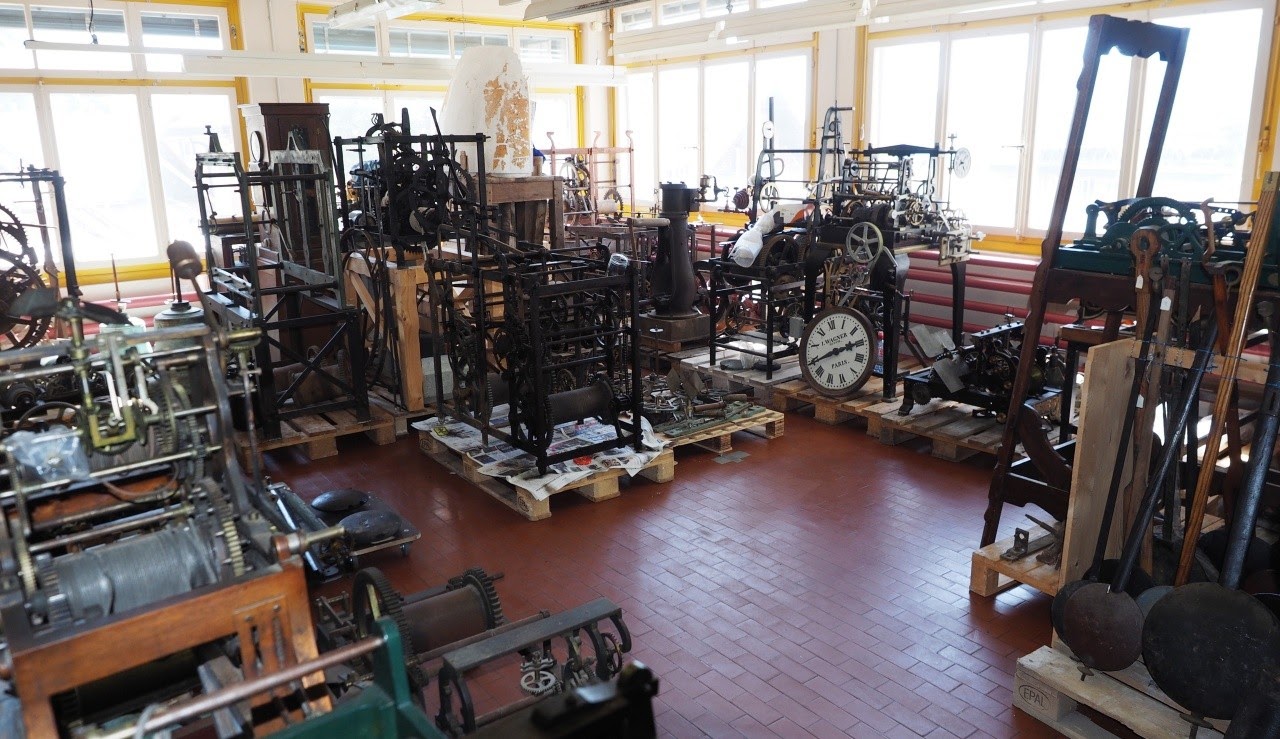
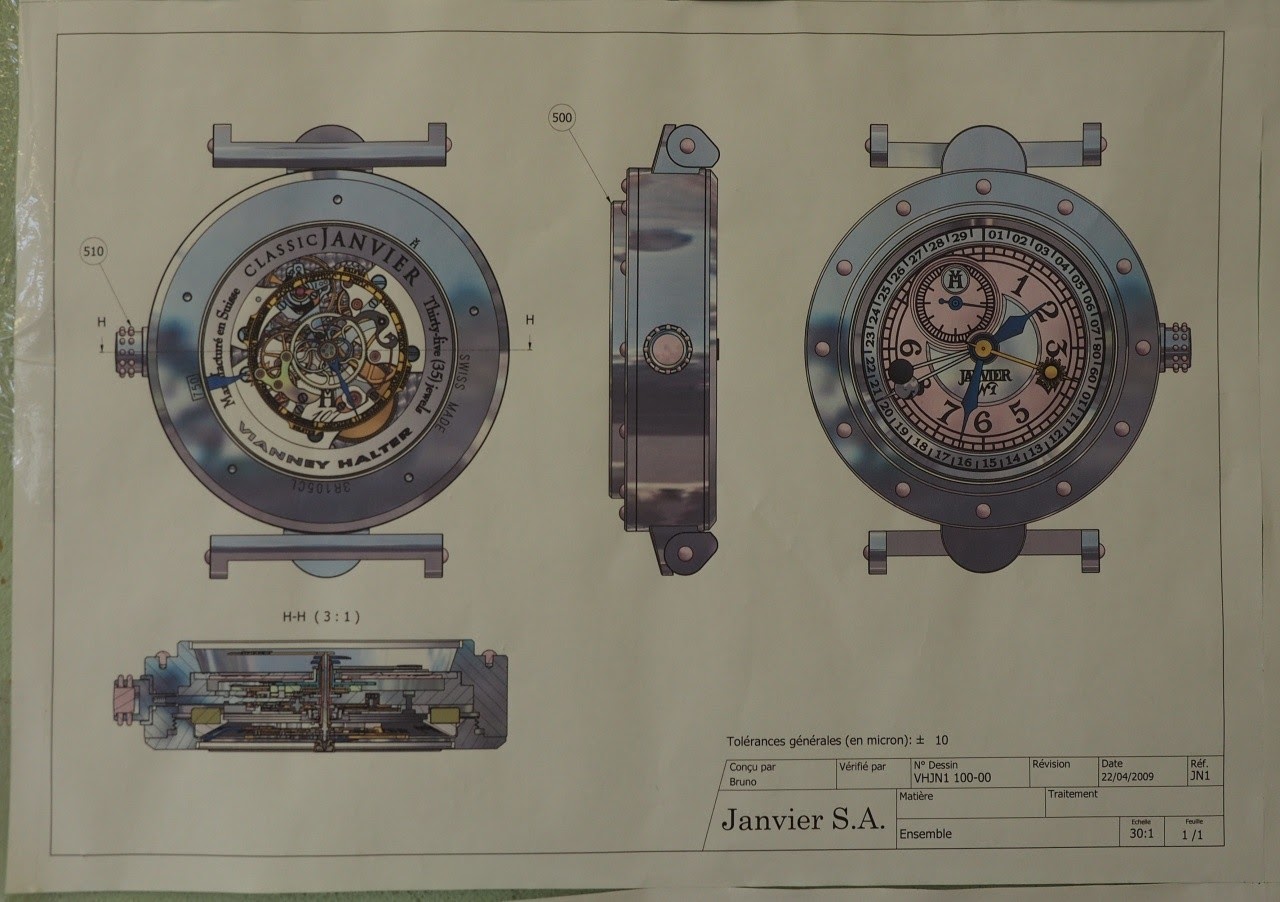
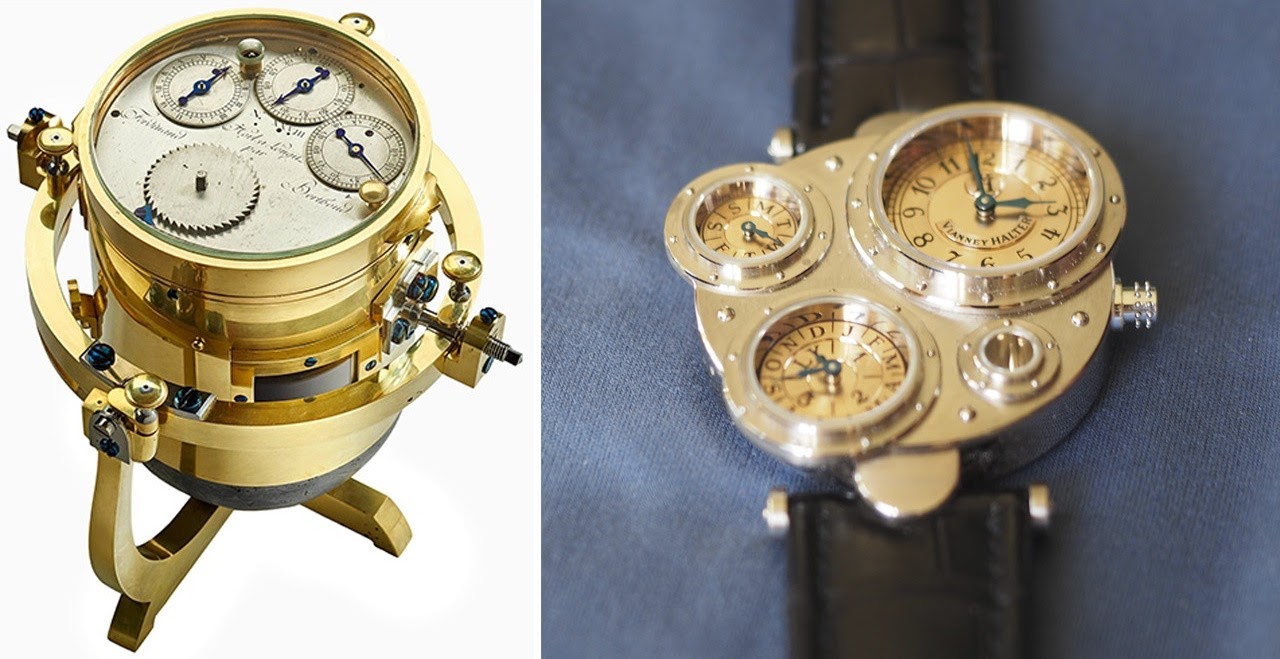
(Marine Chronometer of Ferdinand Berthoud with its separated dials for hours, minutes and seconds. It was the inspiration for the Antiqua of Vianney Halter.)
The Trio (still produced) as well as the Contemporaine (only five built, with Kari Voutilainen snapping one away from Vianney Halter when they both bid at the same auction) are – according to Vianney Halter – declinations of the Antiqua.
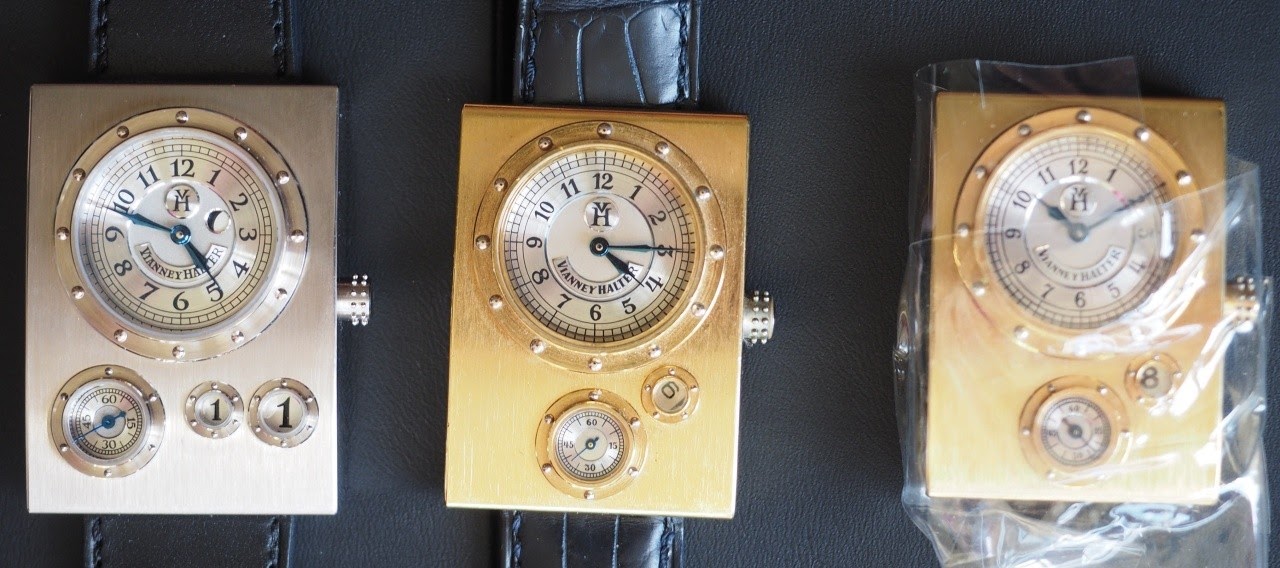
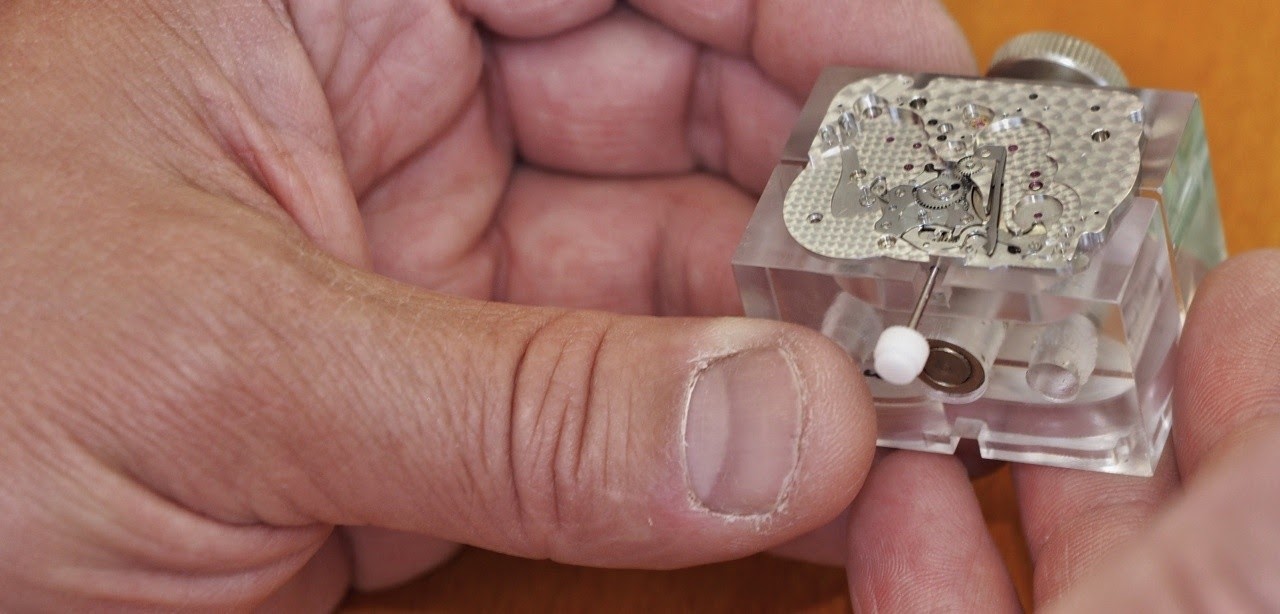
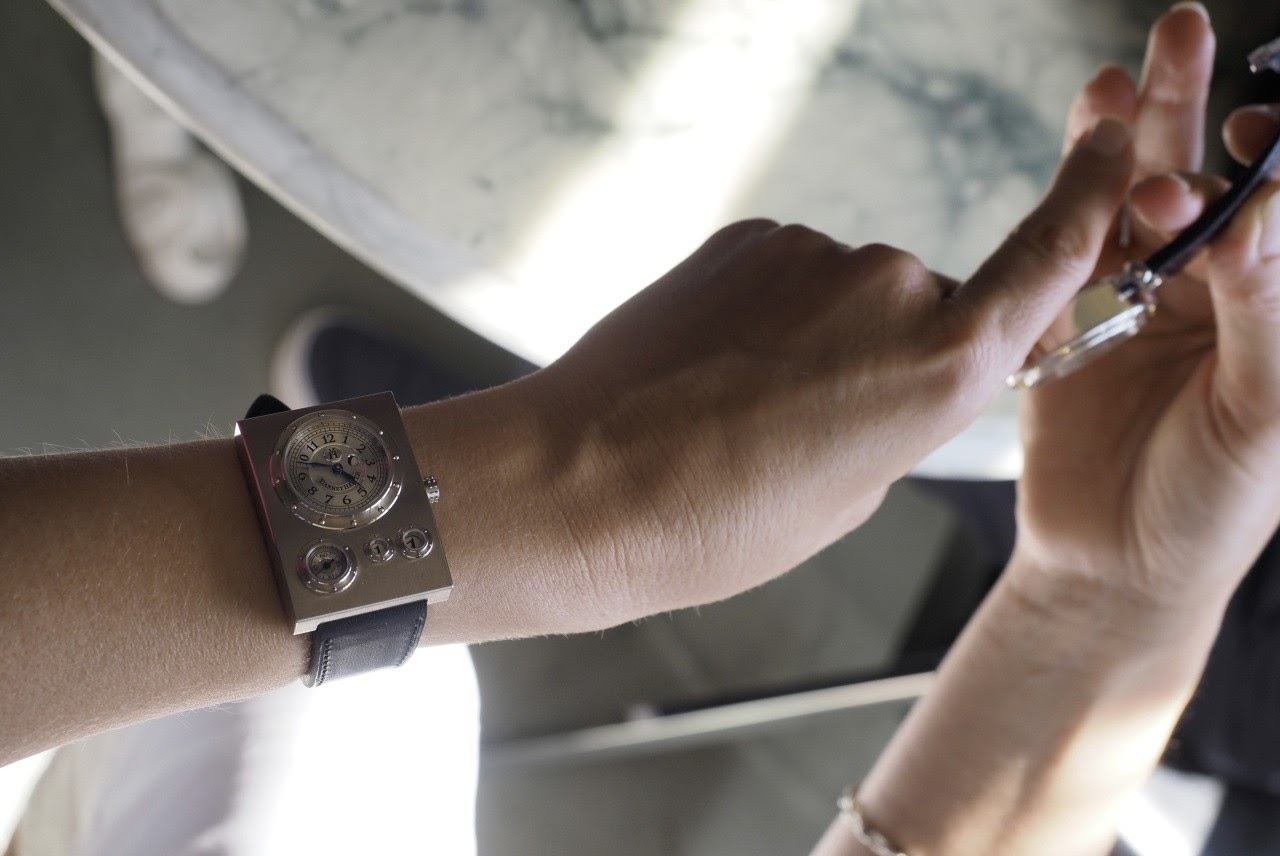
Vianney Halter’s best-selling watch at the moment is the Deep Space Tourbillon. He explained that this model shall remind mankind of the four dimensions that rule our lives (three space dimensions and a time dimension). As of now, widely accepted (until proven false) physics principles state that one cannot uncouple space and time, so it’s even inaccurate to speak in terms of time OR space. There is only space-time, and it is a 4-dimensional environment. We only think time is special because we are unable to travel both ways.
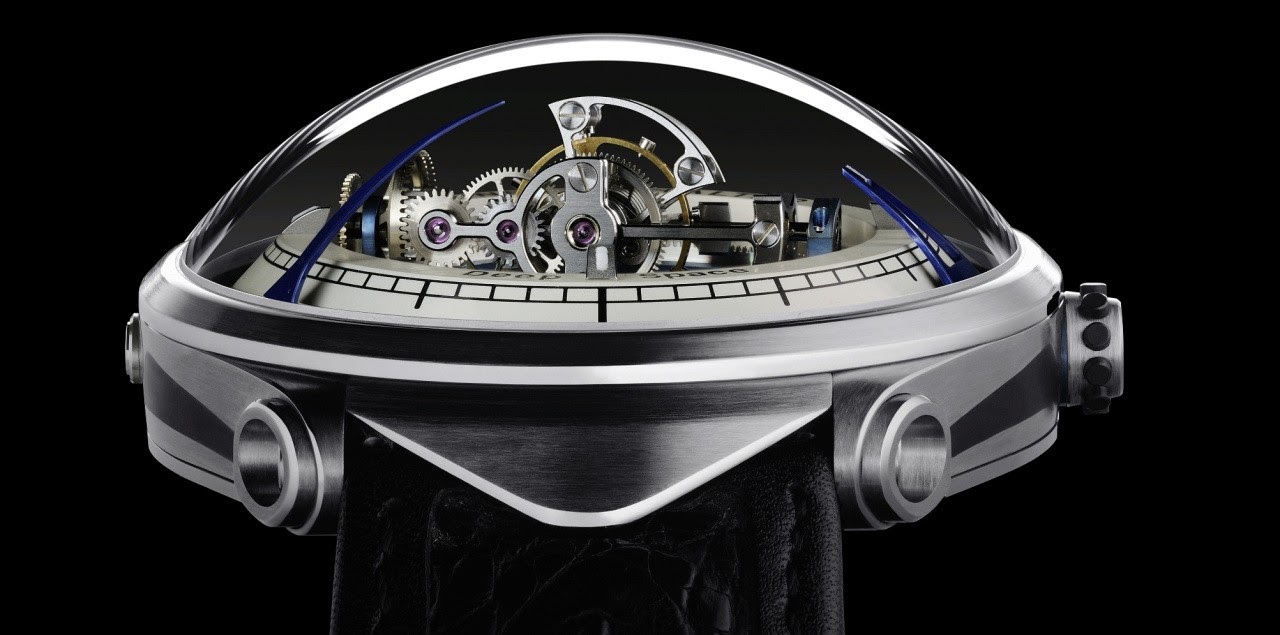
This lecture shows the deep thinking nature of Vianney Halter. Though, I could not quite follow and looked for material things in the atelier I could better comprehend. I always get excited when I find projects that have not yet got the full publicity. One of these was indeed to be found in between paperwork and tools on a desk: The HTO Grand Voyageur was a project in 2007 together with designer Jean-Yves Mariez. Inspiration for the design came from a railway clock. The watch has an ETA quartz movement.
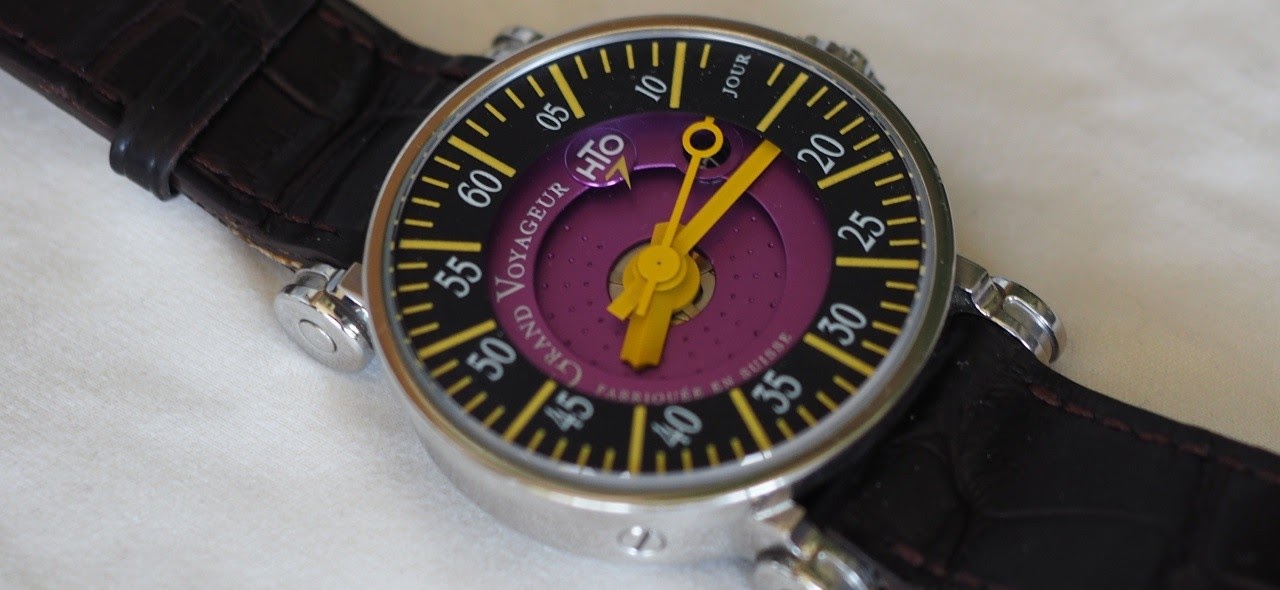
To experience the man act accordingly in a natural and not rehearsed way, it brought me the insight that with a Vianney Halter watch you really get a watch with his DNA ingrained and not a design soiled by marketing considerations. What more could you ask for as a collector?
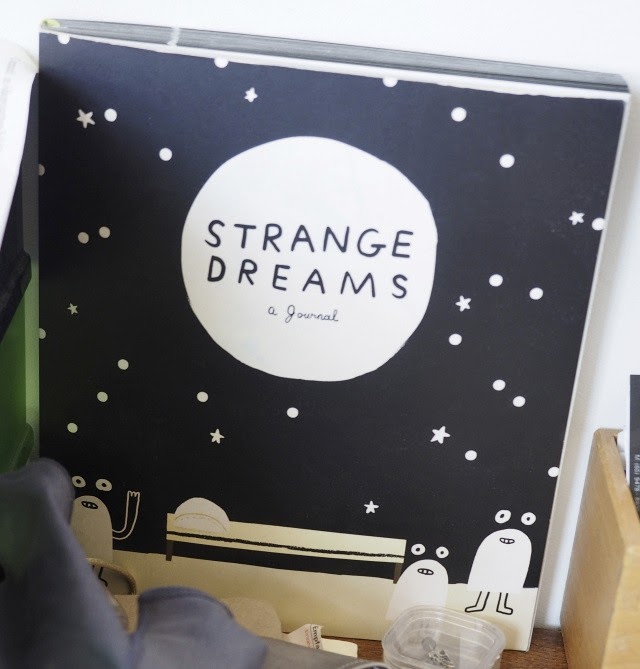
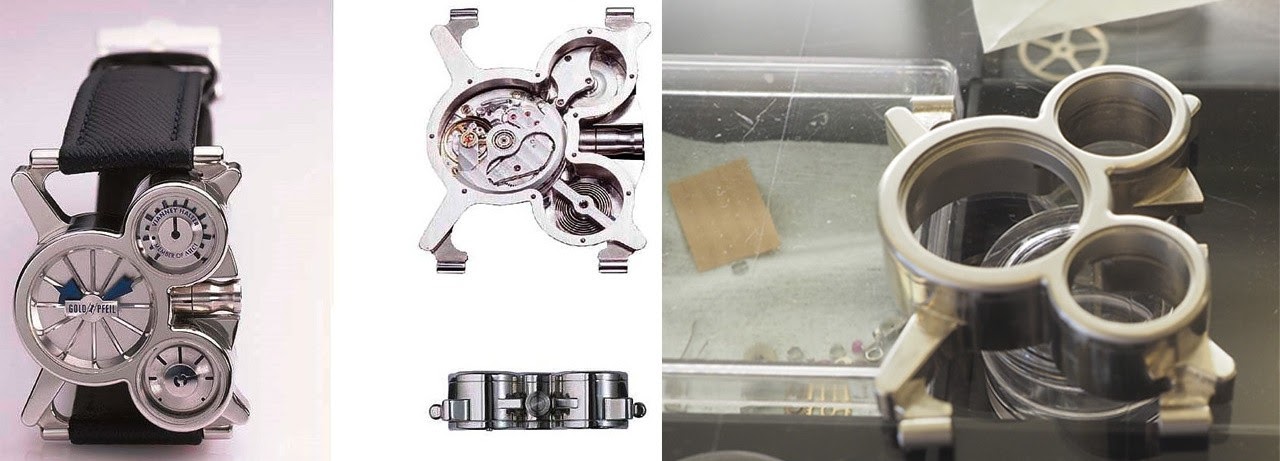
Philippe Dufour
We had the great honour of Philippe Dufour not only joining us for a meal, but the whole group being let to roam around his atelier and to be entertained with his experiences and anecdotes.
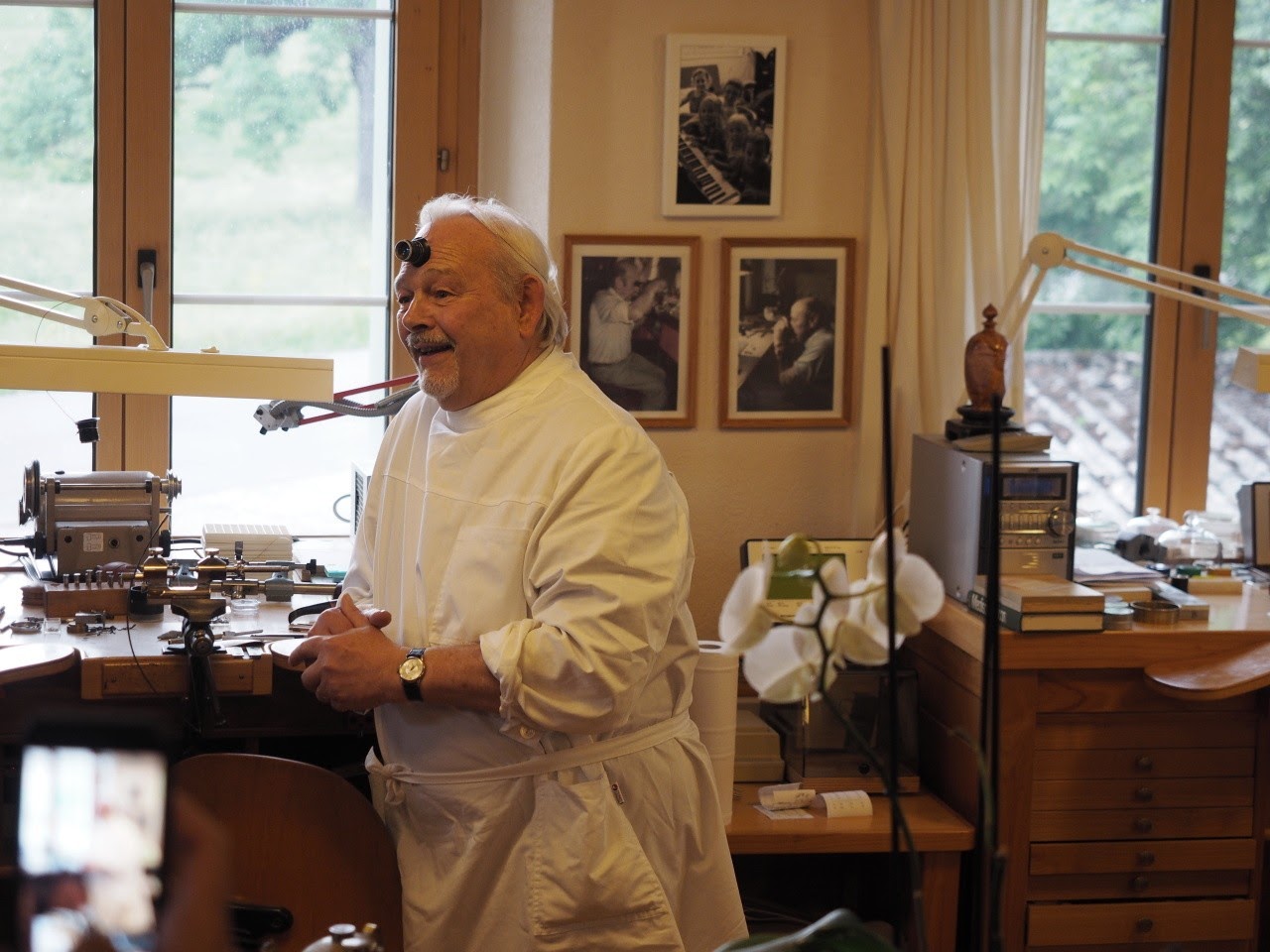
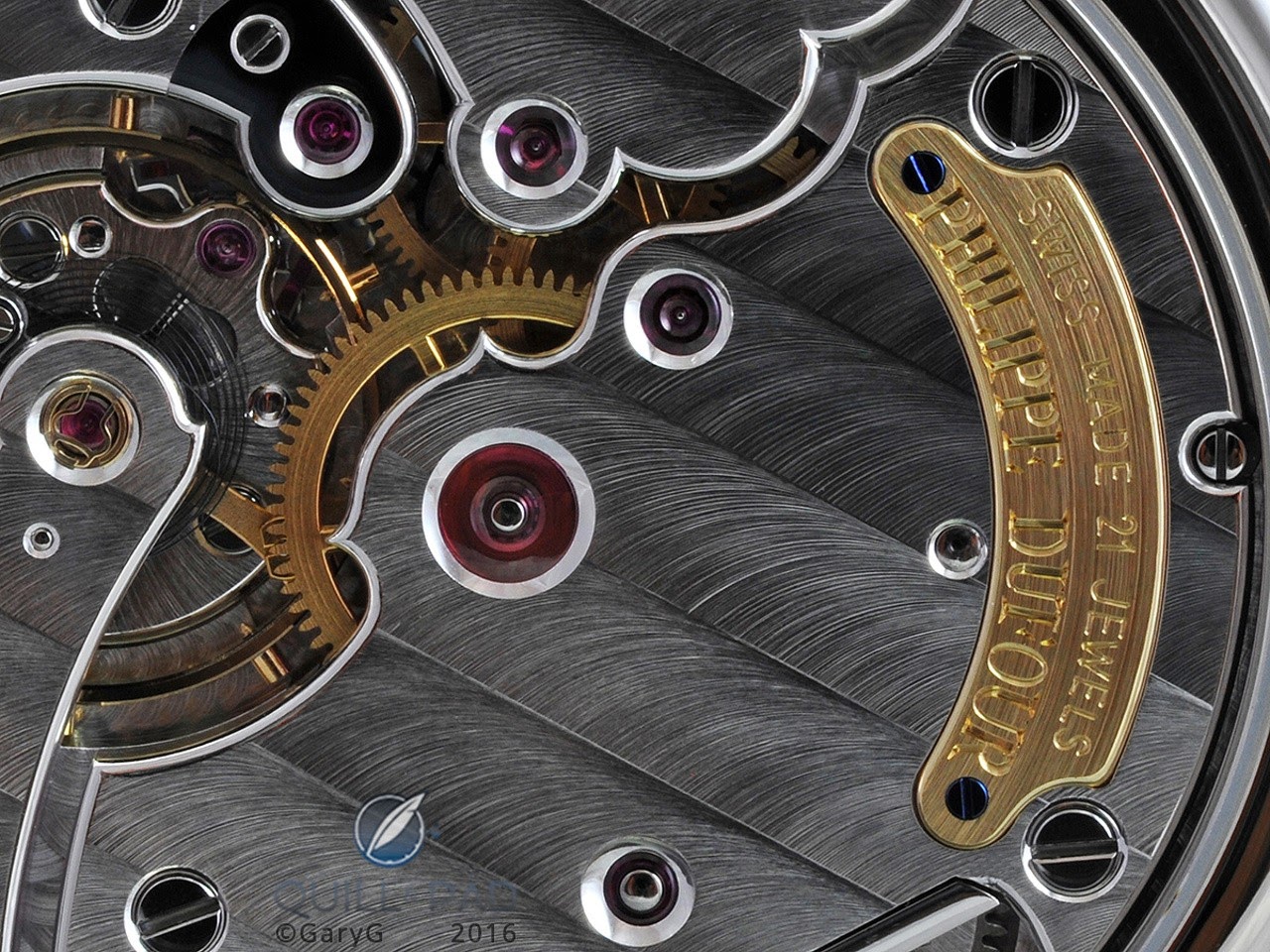
There is, of course, no CNC mill to be found in his atelier. Philippe Dufour did not make all parts for his watches himself but had quality suppliers for some of them. But there was never anything hidden, because the dial supplier Metalem was even allowed to display the name prominently at the front of the dials.
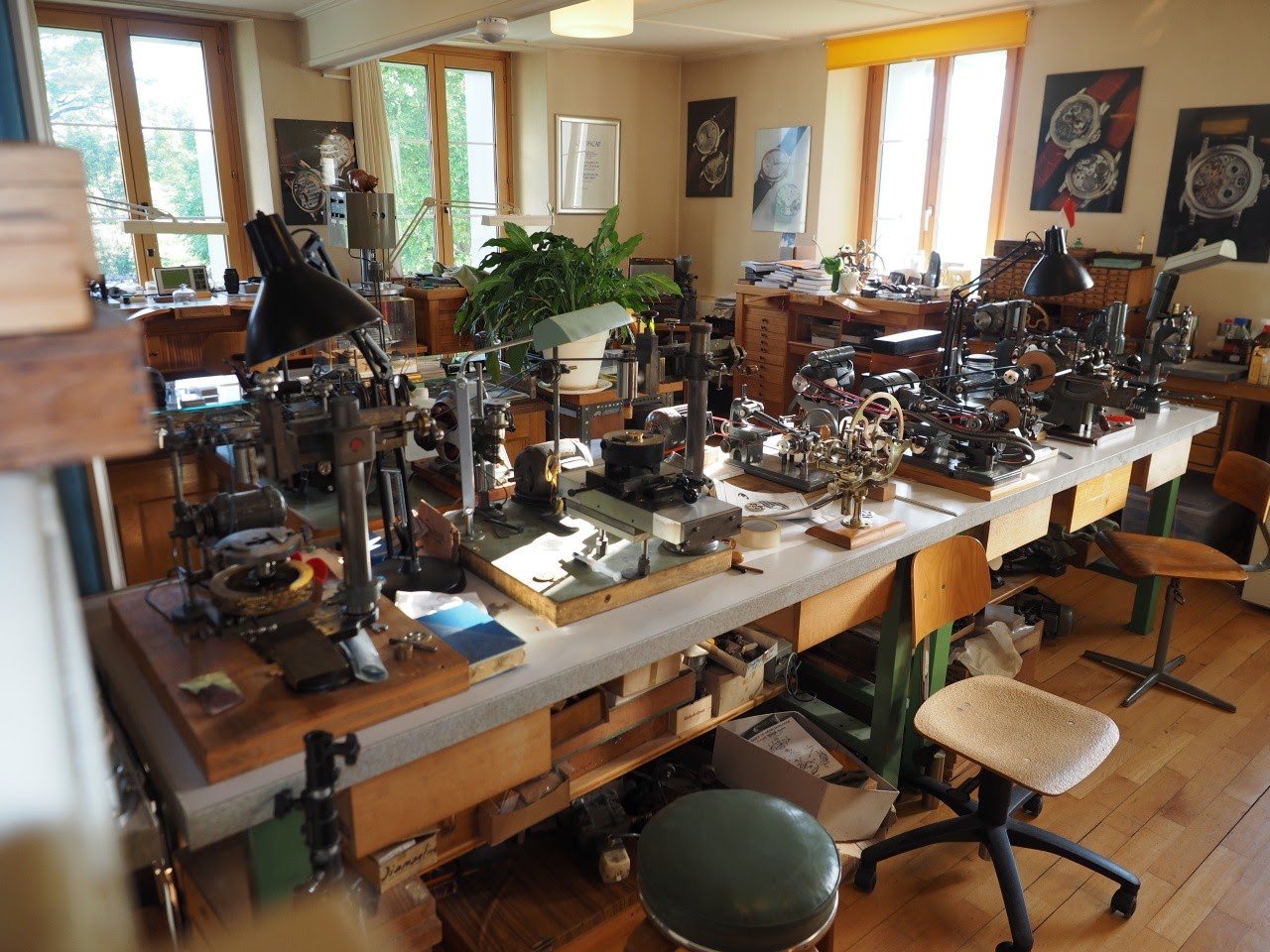
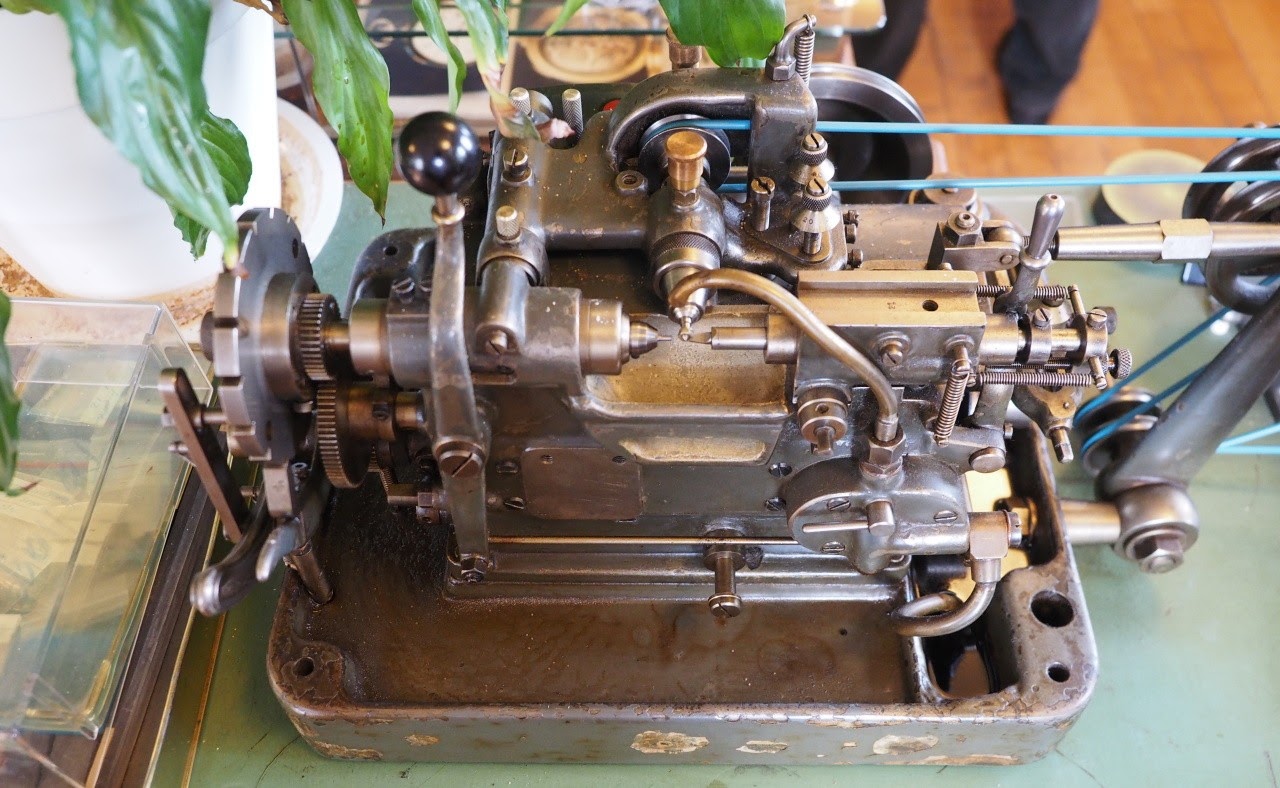
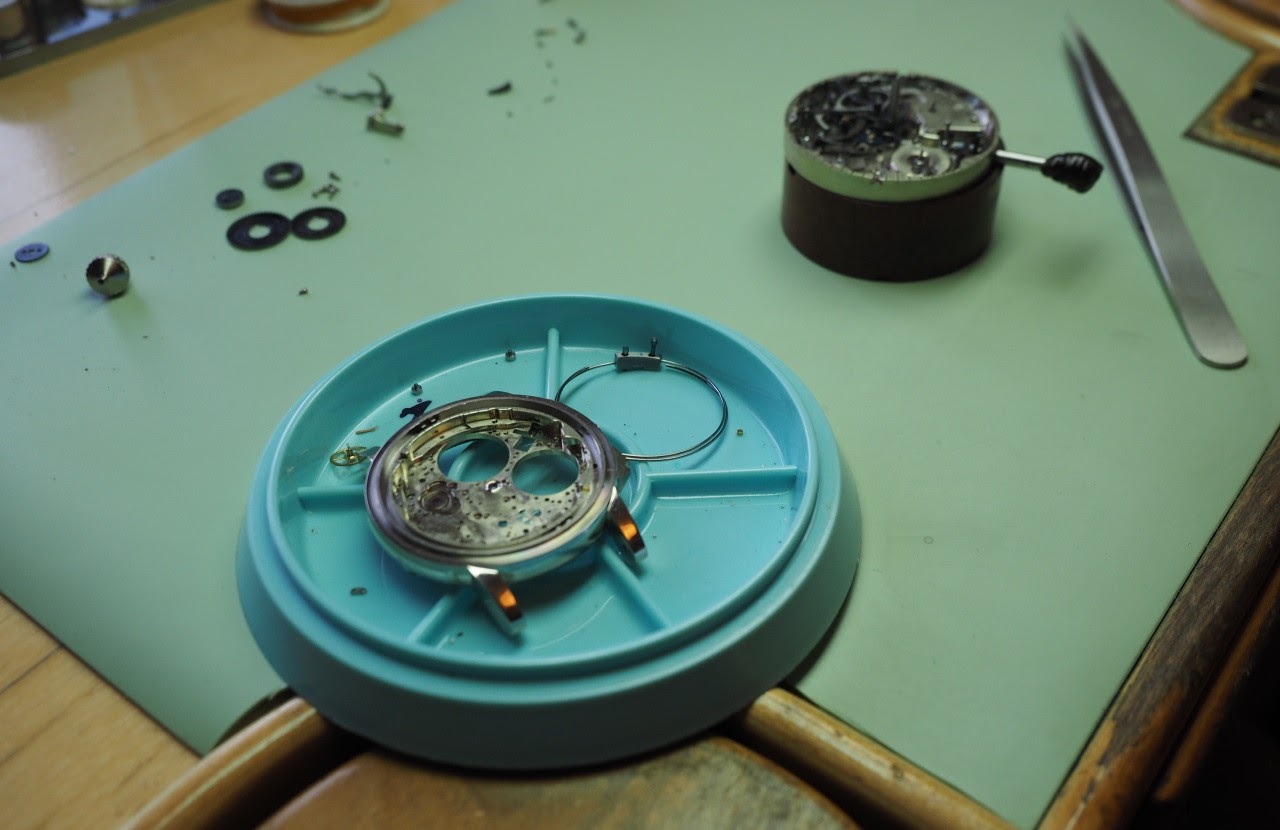

Thinking about this situation, I believe Roger Smith is the only one who has managed to be accepted as “successor” of a master watchmaker, his mentor George Daniels. But he carried on the principles and ideas of Daniels, particularly he built not only on a recognisable design, but also adapted only subtly the way the watches are made nowadays. When it is believed the exterior design to be a sufficient USP, the attraction of the watches vanishes, at least for the enthusiasts (and the masses hardly ever discover these niche brands).
On this tour we have experienced how much these artisanal watches are formed by the beliefs and principles the masters follow. To produce watches based on valuable personal convictions is hardly a way to get rich quick. No wonder then that the master usually leaves the ship quickly when financial goals become the focus. After the samples given by Gerald Genta, Daniel Roth and Martin Braun, I wonder where Christiaan van der Klaauw and Peter Speake-Marin will move without their name giving founders.
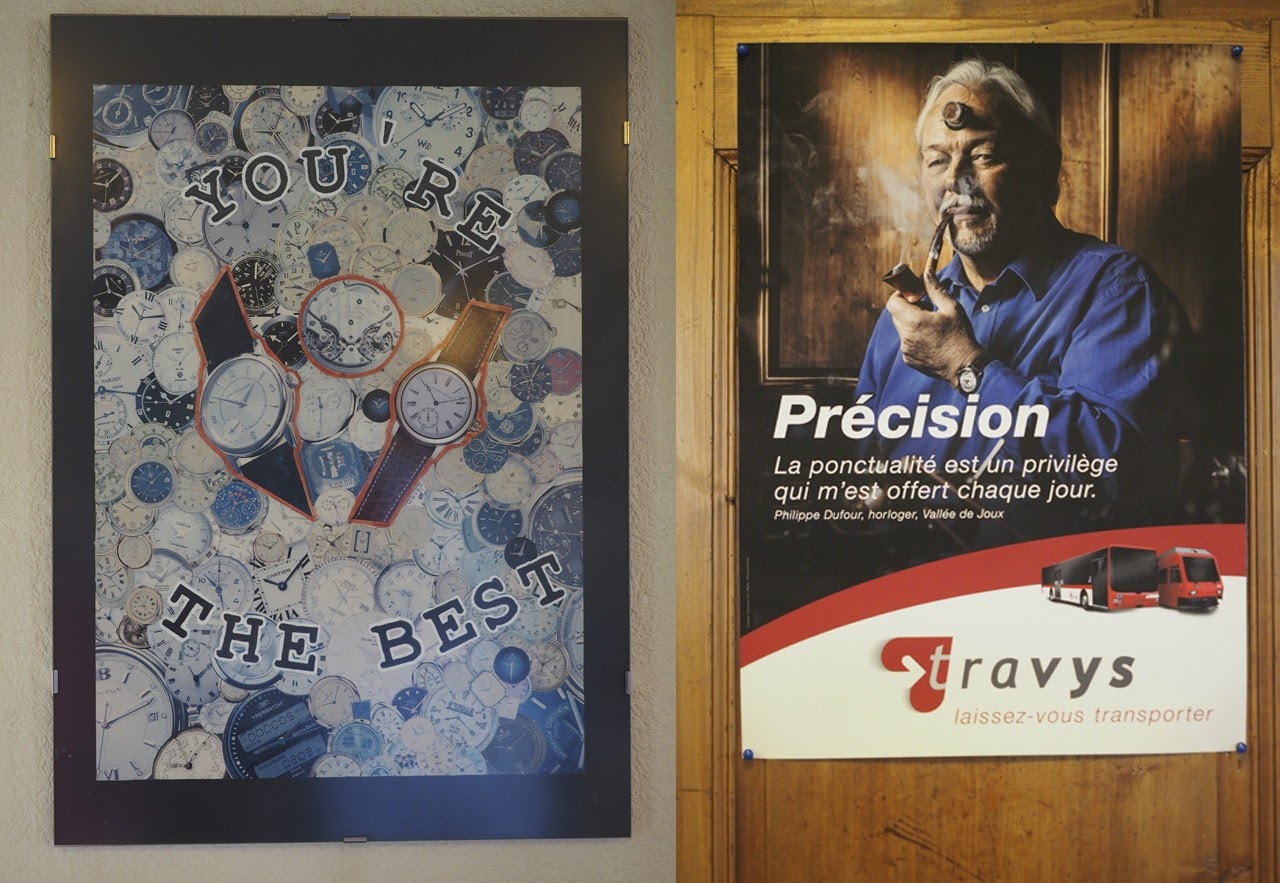
But first of all, Philippe Dufour did perhaps more to interest enthusiasts in fine watchmaking of the type we have seen on the tour than anyone else, particularly in Asia. As real ambassador for this kind of watches he tours the world since many years and stayed accessible to watch lovers. The success of his watches on the secondary (auction) market is likely not only the result of his fine craftsmanship, but linking the watches to a cult person. One well-known collector and columnist stresses again and again: “It is all about the people!”
Driving home in the late afternoon of Saturday, I had time to reflect what I had seen on these three days in the ateliers. All of the watchmakers we had met buzzed with an infectious enthusiasm and to experience them 1:1 gave trust that they will do the utmost to create a watch of the highest quality and one the customer can enjoy for years. And trust is indispensable when quite important sums shall be spent on an often individualised watch or even a unique piece that likely cannot be flipped the next day without financial consequences. Discussing such buys – requiring competent advice, some guiding in the choices available and also decisions on the part of the watchmaker – I am not accepting “interfaces”. Therefore it is good to know that the masters we have visited are prepared to deal with customers directly.
It leaves me to thank Mike H and the generous hosts for providing me with three unforgettable and inspiring days. It was in addition a superb experience to share all this with other like-minded enthusiasts.
Björn


























